




“The people here are very kind and nice, more than other states,” Tao said, adding that Peterson and CRIC have especially been helpful.
Founded in 2014, CRIC works to provide immigrants and newcomers in the valley with resources, such as driver’s license training, citizenship tutoring, money management, business applications and resettlement programs, according to Peterson.
Tao isn’t the only individual the nonprofit has assisted. Just this past year, the Alharbi’s started their own business under Peterson’s aid.
Originally from Kuwait, the Alharbis moved to the U.S. for education, according to Shouq Alharbi, the family’s 17-year-old assistant with the food vendor business.
But in November 2022 when Hammad Alharbi, Shouq’s father, began to have severe hearing loss, his working prospects diminished.
“He really loves cooking, so he taught me how to cook, and I liked it too. I would help him too because of his hearing loss; I would help him like clean, cut vegetables and other things as well,” Shouq said. “And then he just gave me the idea that he wanted to open like a restaurant or even a food truck by chance, so we had the opportunity to look at the Gardener’s Market in Logan.”
the nonprofit network with the small businesses will help financially and socially establish the families in the valley.
“I think small businesses are a great way to showcase how much immigrants, refugees, whoever, how much they do know, because they have all this experience and knowledge and how to make food and how to make it really good and all those things. It’s just how to implement it in a new context, and that’s what CRIC helps with,” Ault-Dyslin said.
The Alharbis and Tao aren’t planning to stop at the local markets — Shouq Alharbi mentioned she and her family are hoping to one day either open a food truck or even a restaurant, and Tao added she’s thinking about adding an online delivery service.
“They’ve got big ideas for what they want to do with food in the valley, and there’s a lot of momentum and enthusiasm for different international food right now,” Peterson said. “It’ll be really wonderful to see where this goes.”
Shouq said the expansion of her family’s business would especially help expose Logan residents to food they may have never tried before, helping them to understand other cultures and her family’s background.
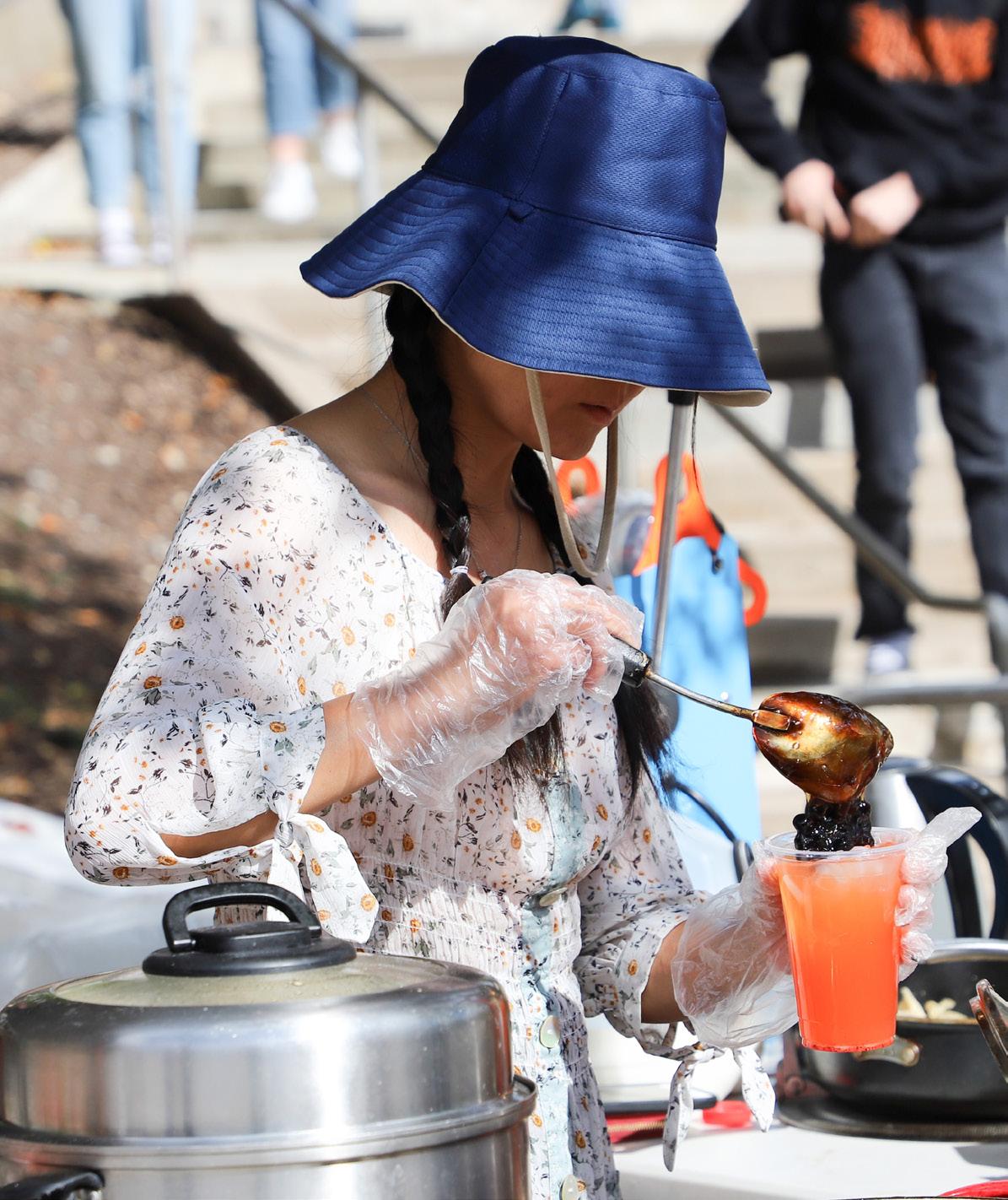
“In Logan, I think that if we bring more of our own cultures like Asian, Hispanic food, and more Middle Eastern, I think that it will make Logan more diverse than it is now,” Shouq said.
Toreadtherestofthisstory,scanhere:
By Kris Carpenter NEWS REPORTERDozens of Utah State University students line up outside food vendors at the USU Farmer’s Market, but this time, it’s not just soap, jewelry and chocolate who have captured the students’ interests — it’s also the freshly cooked potstickers, steamed buns, chicken shawarma and falafels which now decorate the market’s landscape.
At the start of the fall semester, Anna Tao’s Chinese food and the Alharbi’s Arab-themed food appeared at the market, providing students with a taste of authentic food from different areas of the world.
Having moved to United States from China 30 years prior, Tao was homesick for authentic Chinese food since many of the traditional Chinese dishes — such as steamed buns, or baozi — were scarce in Cache Valley. This summer, Tao began cooking food at the Cache Valley Gardener’s Market when she found that, “My food can help make some money, because here (it) is very hard to find food like that.”
To continue expanding her business, she asked Mitch Peterson, a business programs coordinator with the nonprofit Cache Refugee and Immigrant Connection, or CRIC, for any extra markets where she could work. After receiving a recommendation to the USU market, she moved her business to cook for students at the start of fall semester.
However, getting a spot in the market proved to be difficult until Peterson provided them an opportunity to cook at one of the CRIC’s sponsored markets.
The entire family — including Hammad’s wife, Darin; and Shouq’s siblings Shonouku and Sari — would cook to create dishes like chicken and beef shawarma, mashkhool rice, falafel, tabbouleh and baklava.
After their successful venture at the nonprofit’s market, the Alharbi’s applied again to cook at the Cache Valley Gardener’s Market. They received an opening and began working throughout the summer.
With the experience of vending under their belts, the Alharbis decided to apply to work at the USU Farmer’s Market after receiving a work advertisement for it via email. They were accepted into the market shortly after.
In addition to giving connections and helping Tao and the Alharbis find a spot in the local markets, Peterson used his trailer to haul pots, pans, tables, canopies, cooking equipment and any other materials they may need.
“Ultimately, we want people to have stability, and this is one way that they are getting it for themselves. We want them to have economic and financial stability and familial stability and housing stability and educational stability,” Peterson said. “This is just one small thing we can do to help them get that and hopefully continue to grow.”
Nelda Ault-Dyslin, the founder of CRIC, said having
Kris Carpenter is a senior studying english and journalism. When they’re not reporting and writing, they’re spending time with their spouse, reading, or playing Dungeons and Dragons.
—jenny.carpenter@usu.edu
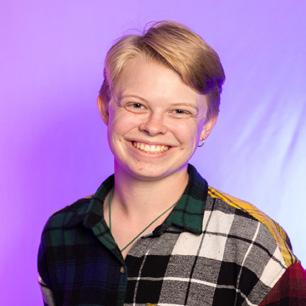
Along line had already formed at SNAC, the Student Nutrition Access Center. Students chatted as they waited their turn to swipe their student IDs and fill their plastic grocery bags with free locally-picked fresh fruit, pantry staples and bagels left over from a cafe in the TSC.
No one was asked if they were struggling with food insecurity. The only qualification for accessing food through SNAC is being a Utah State University Student.
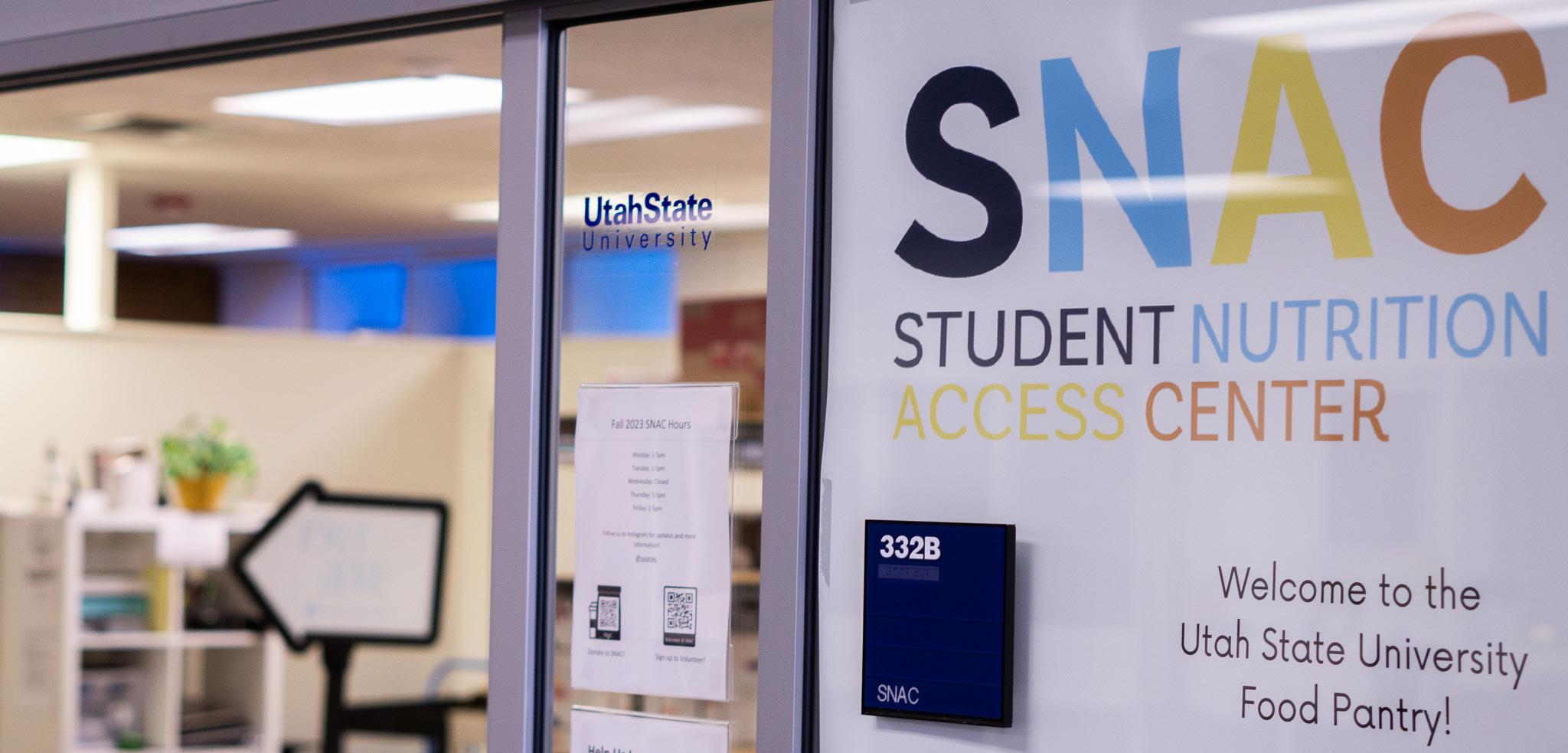

SNAC co-director Shayla Adams is partially to thank for keeping SNAC running smoothly.
“We are open for all students to come, no questions asked,” Adams said, “It’s really a place where any student can come no matter what their financial situation or their home situation is.
Sophomore Aggie Johnson says SNAC helps her get through her homework by providing access to food.
“It’s just convenient, you know? I like it because it provides steady snacks,” Johnson said. “Sometimes I’ll be hungry just sitting here, working on my homework. I can pop in and grab a doughnut or a bagel.”
Johnson also utilizes SNAC to supplement her groceries with their pantry staples, like macaroni and cheese.
“I think everyone should use it. You
know, everyone could use a box of macaroni and cheese,” Johnson said.
SNAC works to address food insecurity on campus by providing access to nutritious food. They also help limit food waste from on-campus restaurants by gathering unused food and redistributing it to students.
“Our main mission is decreasing food insecurity and also decreasing the amount of food waste on campus,” Adams said. “So, we do food recovery. We go down to the Hub and the Quickstop, basically any restaurant on campus, and receive food from them.”
A survey distributed by SNAC found nearly 43% of respondents said they had “cut the size of meals or skip meals because there wasn’t enough money for food,” and Adams said demand is increasing.
“Our demand has increased every year,” Adams said. “We’re trying to reach out to local restaurants and businesses to do more food recovery from them as well so we can serve more students.”
SNAC does not rely on student fees; instead, it exclusively uses donations and food recovery to line the shelves of its pantry. Volunteers can participate in gleaning, which provides fresh produce to the pantry by partnering with local community members to help harvest food that would otherwise go to waste.
“We only rely on donations from the community. So, if the food pantry doesn’t have
enough food for the week, then we don’t have enough food for that week,” Adams continued. “That’s been a struggle, and we’re trying to reach out to more places to get more options for food.”
Though SNAC still relies on donations, a recent move into the College of Agriculture and Applied Sciences has Adams hopeful. Through funding provided by the college, SNAC will be able to increase food options for students.
“They have a lot more funding available,” Adams said. “That’s been nice to have more employees and have more options for students.”
Anyone who would like to visit SNAC can check their website at usu.edu/snac for additional information such as hours, donations or volunteering.
Sydney is a junior studying political science and journalism. When she’s not chasing the latest scoop, you can find her hiking and turning stress into delicious baked goods.
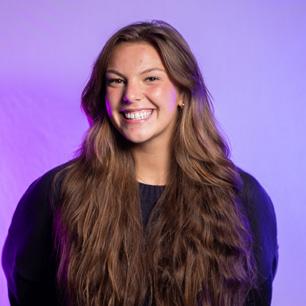
—
sydney.lyman@usu.eduWith the cost of schooling constantly rising, students, parents and colleges are always looking for ways to make this financial burden easier to carry.
An organization called EAREA, or Emeriti and Retired Employees Association, at Utah State University, has created a scholarship in hopes of contributing to the ongoing effort to support USU students.
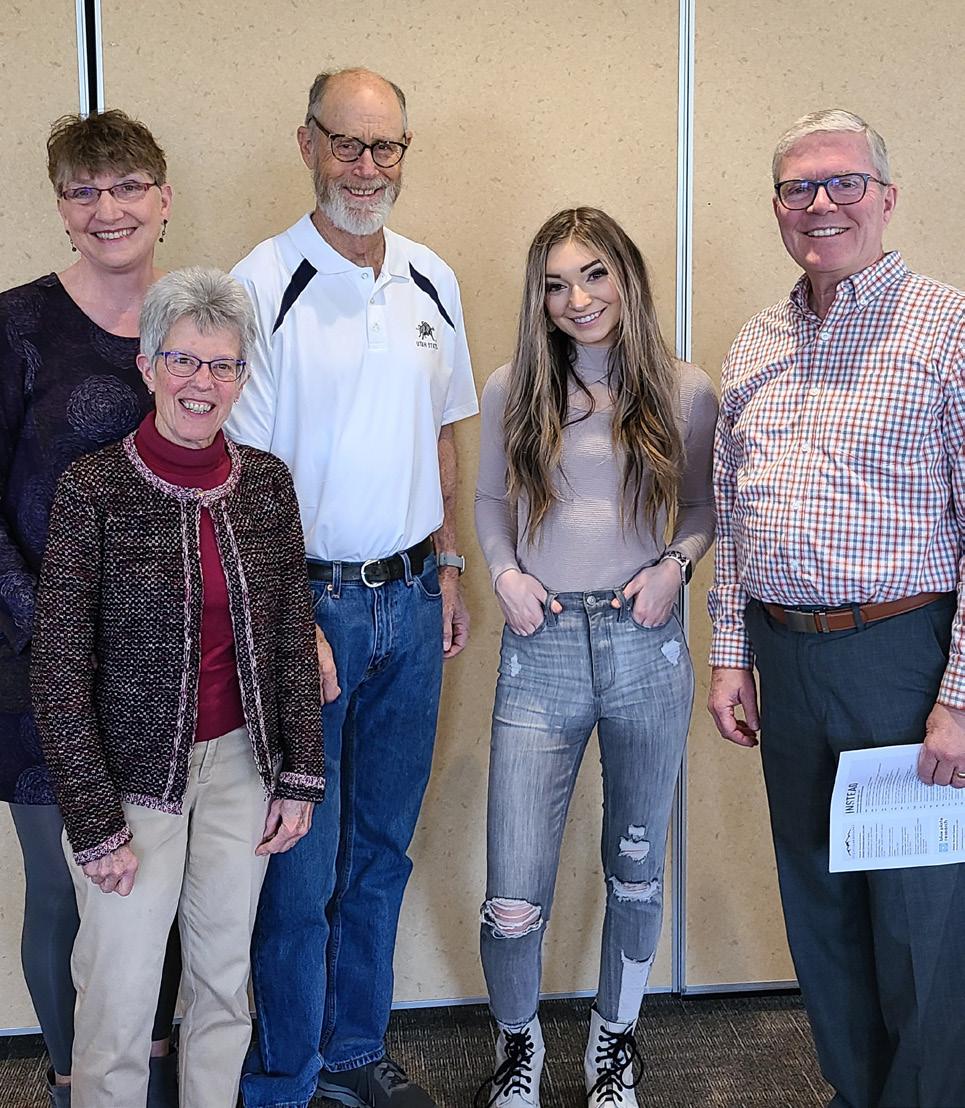

“It’s a group of retired faculty and staff from Utah State who have a commitment to staying and supporting the university,” wrote Mary Leavitt, the scholarship chair at EAREA, in an email. “Once we’re in retirement, we have two missions. One is a social mission so that we stay in contact and don’t lose each other once we retire. The other is the scholarship that we support.”
EAREA was created in 1978 when theater department faculty member LeRoy Brandt noticed most of his first-year students would not return next fall due to financial stress. Brandt wanted a way to help sophomore students pay for their schooling, so he created the EAREA scholarship endowment: a scholarship open only to sophomores, funded by retired faculty.
“There’s hardly anything for sophomores,” Leavitt wrote. “You can get a lot of money coming in as freshmen, juniors, and seniors. You’ll often have money available to you because you’re in your major. But that sophomore area just kind of gets overlooked.”
The scholarship endowment currently sponsors two $7,000 scholarships ($3,500 per semester). The EAREA stops taking applications the first week in May and announces the winner in early June. The application requires an essay, GPA and current financial situation of all applicants.
“The Scholarship Committee, which is a subset of board mates, meets usually two or three times each cycle independently and then comes together and combines their scores,” wrote Tom Lee, EAREA’s president, in an email. “So everybody’s got kind of a
rubric or a matrix that they’re using to score all the applications that meet the qualifications.”
Lee said the committee searches for and selects the students who “have the most need.”
“If there were five students with the same GPA, and we all said their essays were great, but two of them already had other scholarships or grants, we would wait and look for the financial need of students that hadn’t gotten other things,” Lee wrote.
Last year, the EAREA only received 40 applicants on Scholarship Universe. Scholarship Universe is USU’s scholarship portal, letting students easily access and see what scholarships they qualify for. However, Leavitt shared her concern about student’s lack of knowledge of this resource.
“I had a student last year who got the scholarship,
and she told me that her friends didn’t even know what Scholarship Universe was and that they had never even heard of it,” Leavitt wrote.
Leavitt also said most applicants found out about the scholarship via their school’s emails.
Lee and Leavitt both want to see EAREA grow to welcome more members and support more scholarships for sophomores in the upcoming years.
“I would just like more retired employees to know about EAREA and participate,” Lee said.
“I would like to see the organization grow,” Leavitt said. “I think that it’s a valuable tool to keep us connected to the university. When you retire, you’re kind of just suddenly not there. And so this is a way to keep that momentum going and keep your connection there. I’d also really like to see the scholarship be able to grow, it would be nice to be able to fund the whole year and give it to more than two students.”
• Chief Jason Brei from USU Police shared that they have updated their website, he is also looking to create a group of students and faculty that can work together with police on certain issues.
• USUSA will be participating in the Intercollegiate day of service on Oct. 14th from 9 a.m. to 12 p.m. Their service project will be gleaning.
Alivia is a sophomore at Utah State University and loves everything journalism. When she’s not reading or writing. Alivia enjoys food, family and playing the guitar.
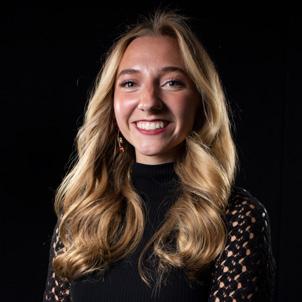
— alivia.hadfield@usu.edu
• Executive VP Aly Cinq-Mars announced that the fee board committee has been chosen.
• The council is working on a resolution about GHG emissions and climate change initiatives. President Abe Rodriguez shared that these initatives are supported by the faculty senate and University President Elizabeth Cantwell.
• Diversity and Organizations Executive Director Alex Garces announed that Diversity Week on campus will be Oct. 9-13
Each copy is worth half a million dollars, according to Davis.
Davis said there are 9,000 to 10,000 historic photographs of USU, Utah, Wyoming and Idaho.
“If you ever see an old photo of USU, it’s from us,” Davis said.
The collection includes resources related to art, journalism, agriculture, irrigation, English, Utah State and the Logan area.
Earlier this year, Verge Magazine used resources from special collections to research for an article and documentary they published online on May 30.
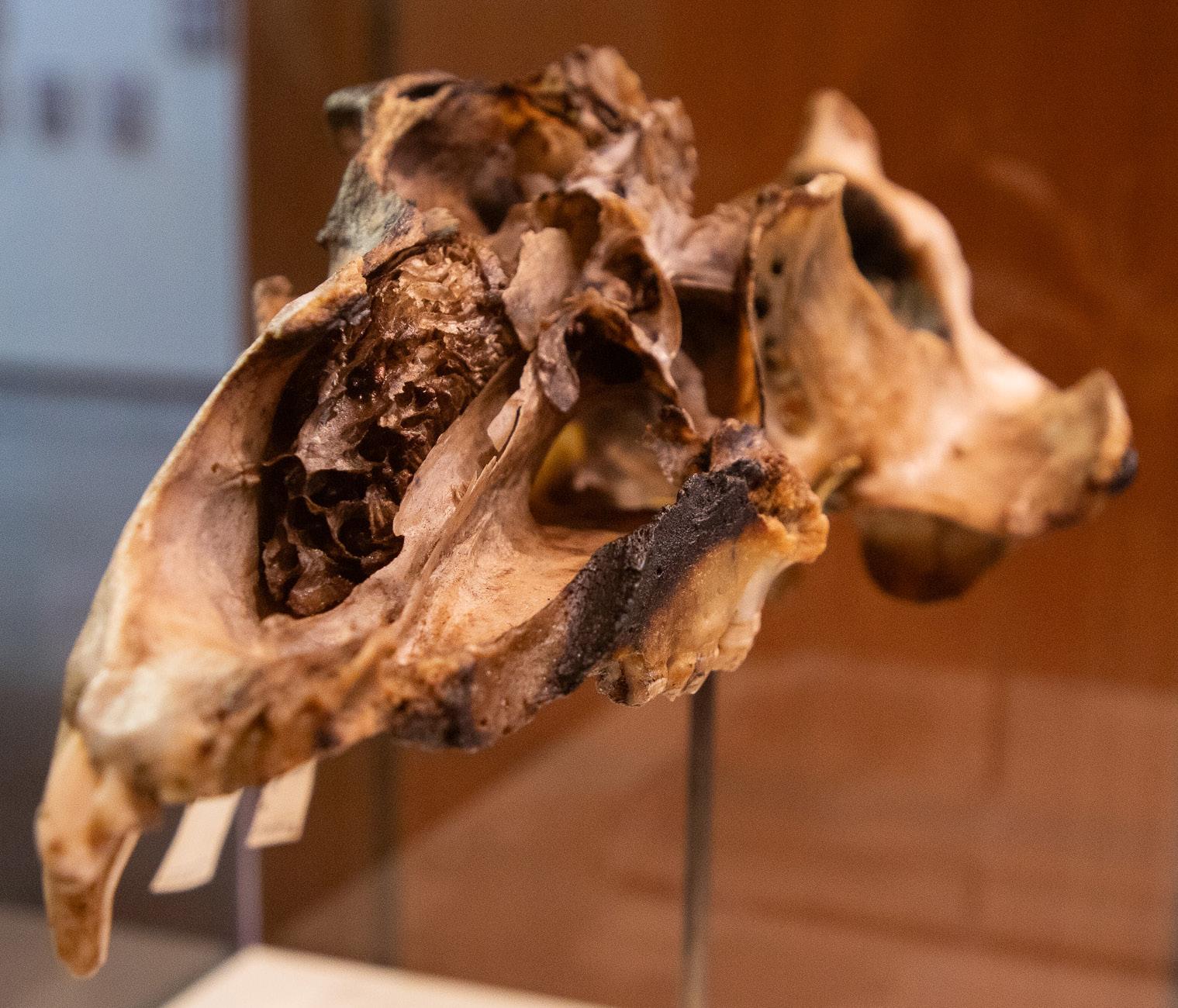
Titled “Lisa’s Final Act: how Apple invented its future by burying its past”, the article reveals that Apple buried “2,700 unsold Lisa computers in Logan” to make a better market for their new Macintosh XL.
The most popular collection, according to Davis, are the old USU yearbooks, course catalogs from 1894, and old editions of The Utah Statesman and Student Life, the old newspaper.
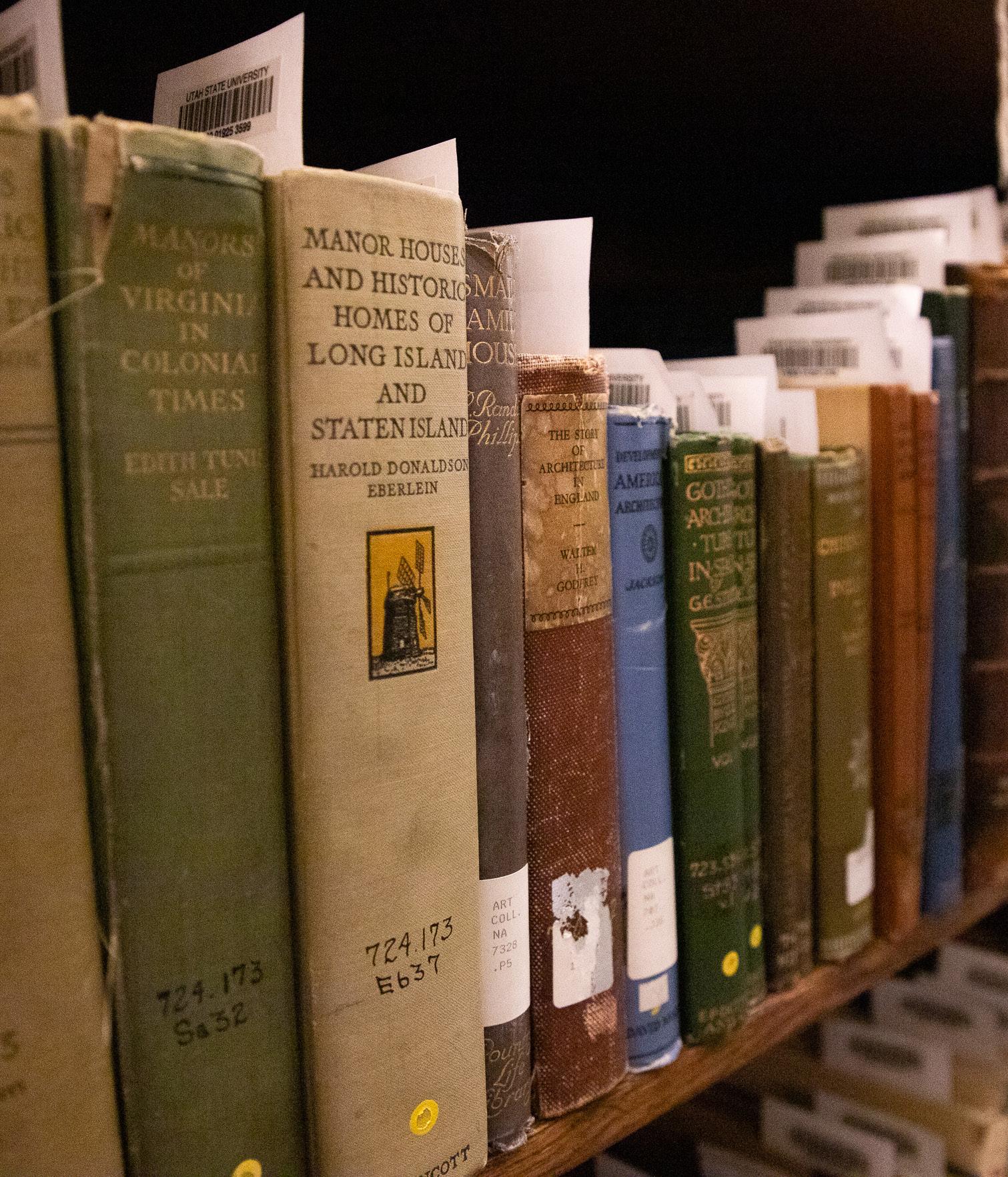
“They did a yearbook from 1971 to 2009,” Davis said. “Those get the most use from students.”
Within the archived newspapers, students can read about game highlights, protests and what mattered to USU students years ago. The special collections staff has helped students with their master’s theses and capstone projects.
According to their website, “University Archives endeavors to collect, preserve and make available the permanent historical record of the University.”
“We are the source,” Davis said.
Andie is a senior studying English and journalism. She loves the sun, music and reading.
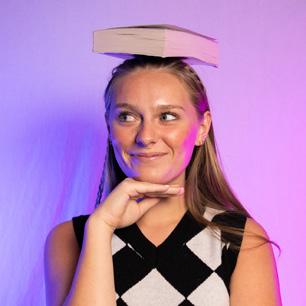
— andie.allen@usu.edu
By Andie Allen NEWS REPORTERWithin the walls of the Merrill-Cazier Library, there are 22,000 boxes of historic collections that can not be found on Google Scholar, according to Dan Davis, the photograph curator and instruction coordinator for Special Collections and Archives.
Special collections is home to many photographs and books that keep the history of USU alive.
“This is all the beginning, right? Not the end goal,” Davis said. Davis believes the past is only a beginning for current students to leave their mark on USU history.
“We want to emphasize that there is a long history,” Davis said. “Alumni have done really interesting things, and I think it can provide some inspiration to other Aggies to see what’s been done.”
According to Davis, in 1888, the legislation was passed to open USU. In 1890, the first classes were held in one small part of Old Main.
The first bachelor’s degree from USU was earned in 1893. The first master’s degree was earned in 1905 and the first Ph.D. in 1949, according to Davis.
The entry level to the special collections area is home to a collection of work from Leonard J. Arrington, a prior USU economic history professor and Mormon history scholar.
According to Davis, special collections is home to the largest collection of Little Red Riding Hood books in the world.
It also has the largest collection of outdoor product catalogs in the world, the second largest collection on beat poets and the largest collection of cowboy poetry. Special collections also houses the personal journals of Jack London, author of “Call of the Wild,” along with letters to his wife and rejection notices from publishers.
A first edition of the book with his signature, letter and photograph was donated by his second wife.
“The most valuable things we have are a series of books produced when Napoleon’s army went to Egypt,” Davis said. “They are some of the first illustrations of Egyptian hieroglyphics in the Western world.”
On Oct. 4, contestants representing organizations of Utah State University competed in the Mr. USU pageant, vying for a coveted silver crown, a diamond-and-sapphire USU ring and the ability to represent Utah State as Mr. USU.
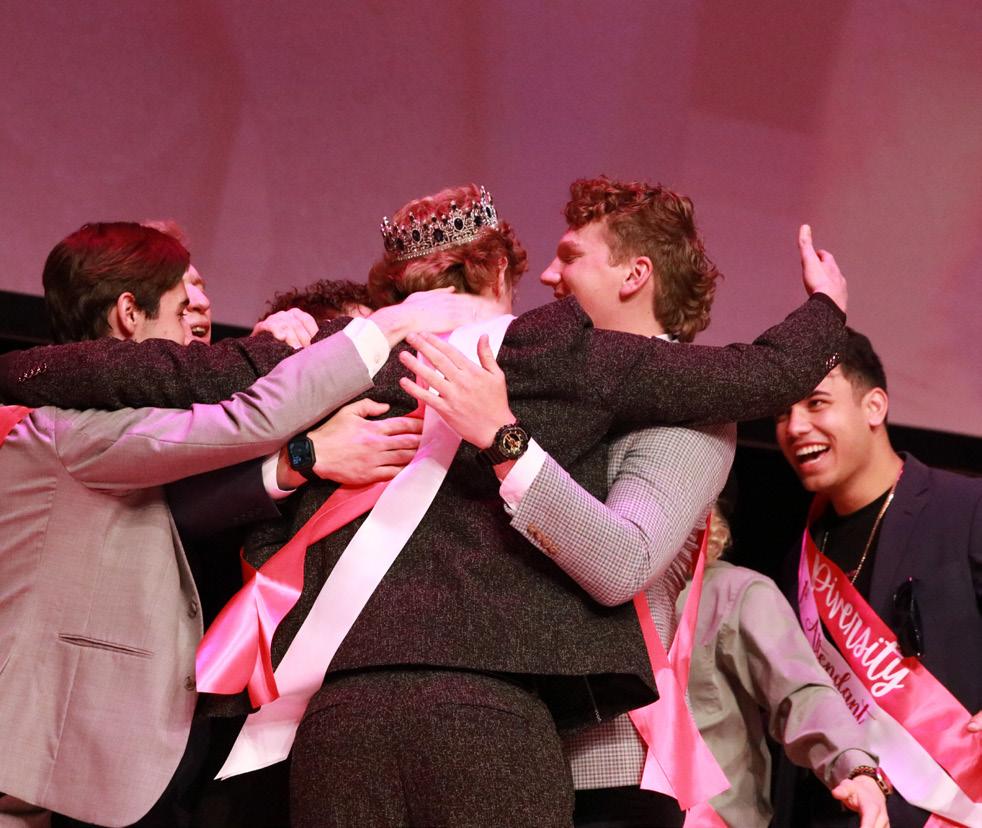
This year, the theme for Mr. USU was all about Ken. The doll usually stuck in the shadows of Barbie got his chance to shine.
Twelve candidates participated in a group number, performed an individual talent and completed a formal walk in an attempt to entertain fans, all while being critiqued by a panel of four judges.
Mr. USU is a Homecoming Week tradition, and many people consider it one of the most fun events of the year, including USUSA President Abe Rodriguez, who competed in Mr. USU last year and served as a judge this year.
“Honestly, this is probably one of my favorite events that I’ve ever attended and been a part of during my college years,” Rodriguez said. “I’m really excited for everyone to get to experience this tonight.”
Mr. USU-hopefuls also think it’s one of the most exciting events on campus. Josh White, also known as Mr. Science, said his experience last year led him to compete this year.
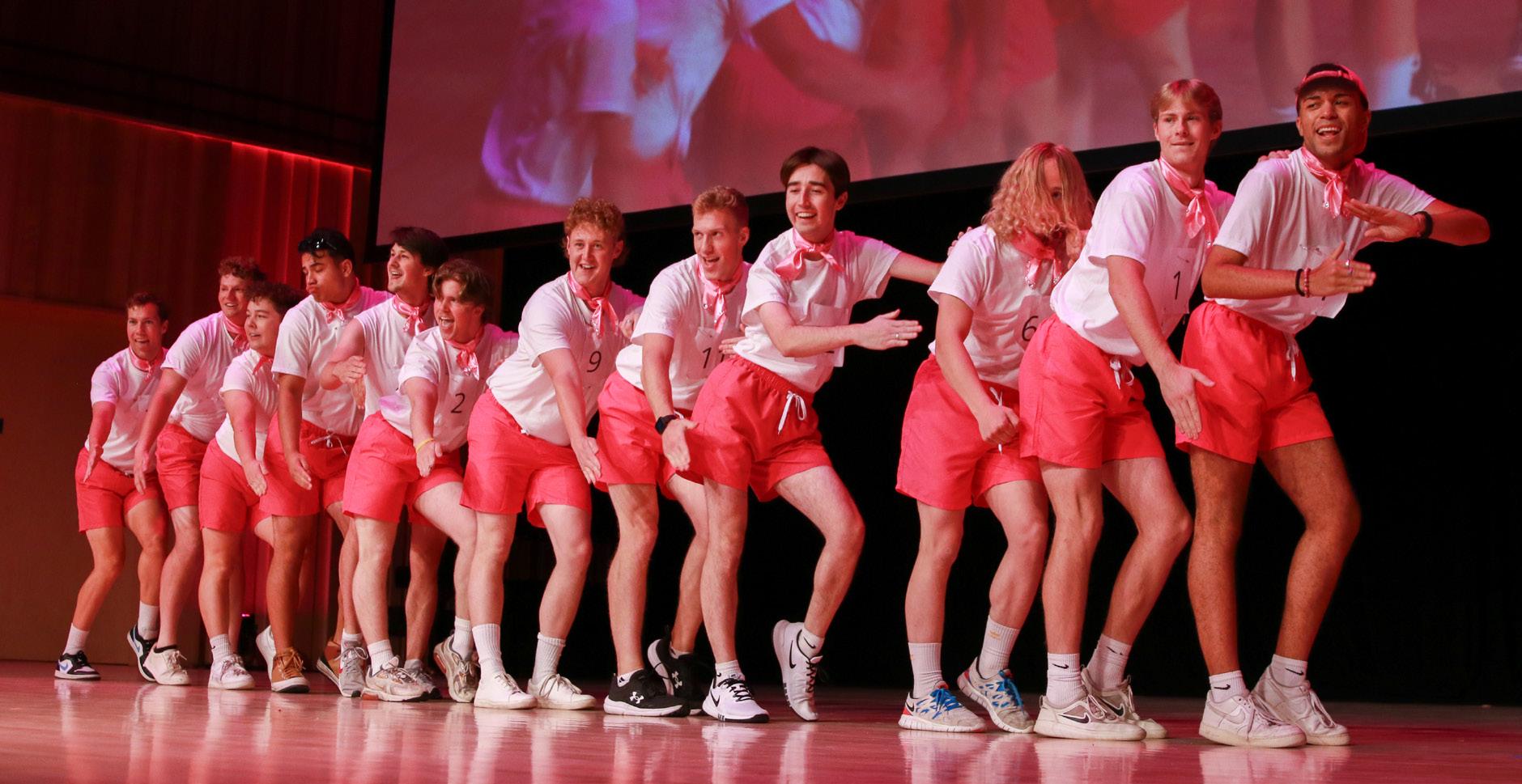
“I did Mr. USU last year with Abe Rodriguez, student body president, and I was a background dancer,” White said. “I thought it was so fun seeing the smiles on people’s faces and silly people dancing on stage, so I wanted to be a part of that this year while representing my college. Just want to bring light to people and be silly onstage.”
The contestants worked hard on all aspects of the show. Brooklyn Ward, an emcee for the night and choreographer of the opening number, shared the dedication it takes to be crowned Mr. USU.
Mr. USU
Jake Russell
People’s Choice
Nathan Ahlstrom
Mr. Congeniality
Henry Greene
2nd Attendant
Christian Stewart
1st Attendant
Isaac Ngatuvai
“I’m excited,” Ward said. “The boys have worked so hard, and I got to choreograph the opening number with them, so it was so fun to do that and then get to watch their progress and see it all come together. I’ve heard and talked to each of them a little bit about what they’re doing. I want to see them in their element, doing what they love. I love Mr. USU.”
The participants also shared what they put into their prep time.
Mr. Greek, better known on campus as Brandon Sorensen, said his preparation involved a lot of hard work practicing dancing in the “rain” and trying on fabulous
costumes for his own rendition of Tom Holland’s viral Lip Sync Battle performance of “Singing in the Rain” mashed up with “Umbrella.”
“I have sweated in places I didn’t know I could sweat,” Sorensen said. “We’ve tried on 12 different costumes, choreographed over 10 hours.”
Other candidates performed different talents, including poetry reading from Ezra Blake as Mr. Ag and a hip-hop dance number from Isaac Ngatuvai as Mr. Diversity.
Nathan Ahlstrom, representing his college as Mr. Art, demonstrated three separate skills.
“I have three different talents,” Ahlstrom said. “First talent is a nice handstand singing a song, second talent is playing the harmonica, ‘Big Rock Candy Mountain,’ and third talent is a quick sketch.”
The pageant allows the contestants to show off their senses of humor and personalities. Some more unconventional segments included a lesson on LinkedIn from Mr. Business, Brad Sullivan, and a presentation with a twist from Mr. Education, Rudy Garcia.
To read the rest of this story, scan here:
Ashley Dorius is a first year student studying English with a teaching emphasis. A Nebraska native, she loves exploring old bookstores, quoting New Girl, eating soft pretzels and being a Swiftie.
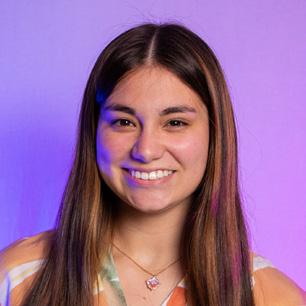
The game is played throughout the whole week, both day and night. The only time you’re safe from zombies is when you’re inside a building.
During the day, humans have a day mission they are tasked with completing. At night, everyone participating in the game gets together to join in a challenging night mission where the main objective is to survive.
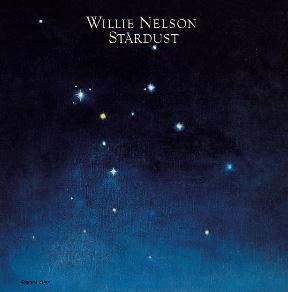
Teagan Perry, the current USU HvZ president, said having a good time with people while also being in a stressful situation can be fun.
“Night events turn into all-out battles pinning good versus evil,” Perry said. “The team leader, or harbingers as they are referred to in the game, are the primary symbols of this.”
By Jacob Casper LIFESTYLES REPORTER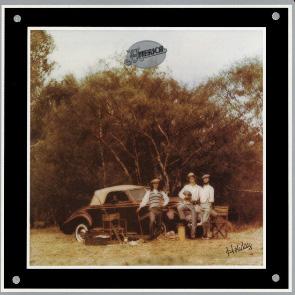

“If you get close enough to a zombie to read the word ‘zombie,’ you’re already in trouble.”

The undead are beginning to rise at USU with the Humans vs. Zombies game that happens each semester. How long do you think you can survive against the unending zombie attack?

Luckily, it’s easy to tell who is a human ally and who’s an undead zombie, because players wear orange bandanas to tell them apart.
Henry Riker is a player with nearly 10 years of involvement with the HvZ community.
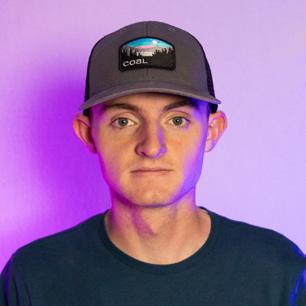

“The bandana says ‘human’ on one side and ‘zombie’ on the other, and technically, you can indicate which team you’re on with which word you have facing out,” Riker said. “But they also have you as a human wear around your arm and as a zombie, wear it around your head.”
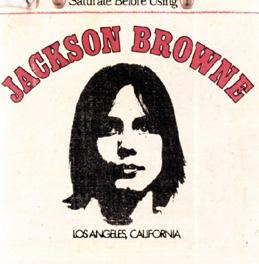
Human players use rolled-up socks as ammunition to stun zombies, giving the human time to run and find a more defensible position.
“If you hit a zombie with a sock, that zombie is stunned and doesn’t have to sit still or do an action anything — just acts as if they are not playing the game until the next respawn,” Riker said. “Respawns are usually every 15 minutes at the 15 minute mark.”

Years ago, human players used Nerf guns to protect themselves from the zombies, with players providing their own. But after these players were turned into zombies, they wouldn’t want to play the game any more.
Some injuries were caused by the toy blasters, so the university had to ask the HvZ community to find another method of weaponry.
There’s a harbinger for the humans and one for the zombies, and a third one to be a moderator who keeps the game fair.
“I’m the leader of the human team,” Perry said. “Because humans need a leader throughout the entire week, I actually can’t die throughout the week. When we write the lore for the game, a lot of times the two harbingers are kind of like the lead characters who are opposing each other.”

Each year, the HvZ president comes up with a new theme for the week and writes new lore for the players to participate in. This story is what all the day and night missions are based around.
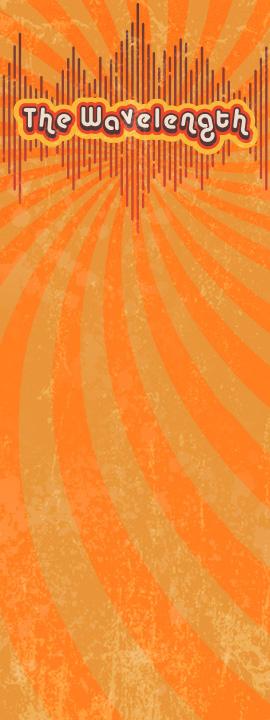
This year, the theme is “the tomb.”
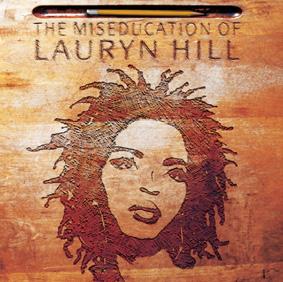
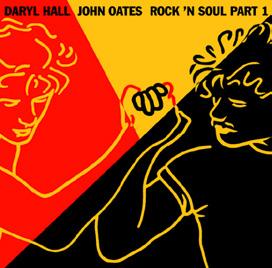

“It’s a little bit of a mixture of a few different things. I’m just generally calling the theme ‘the tomb,’ because we’ve taken elements from ‘Indiana Jones’ and ‘Tomb Raider’ and ‘The Mummy’ and ancient Egyptian lore,” Perry said. “We’ve kind of combined all those together.”
This semester, the game starts Monday, Oct. 9. There will be a final orientation meeting to join the game that evening at 6 p.m. in Old Main 121. Good luck and watch out for the undead on your way to class!
Jacob
- a02357545@usu.edu

Casper is majoring in English with an emphasis in creative writing. When he’s not working, he hangs out with his wife.GRAPHIC BY Brenna Hiltbrand
On Sept. 26, the USU Inclusion Center celebrated World Contraception Day with coffee, pastries, free handouts, puzzles and a safe place for students to get educated on what the day means.
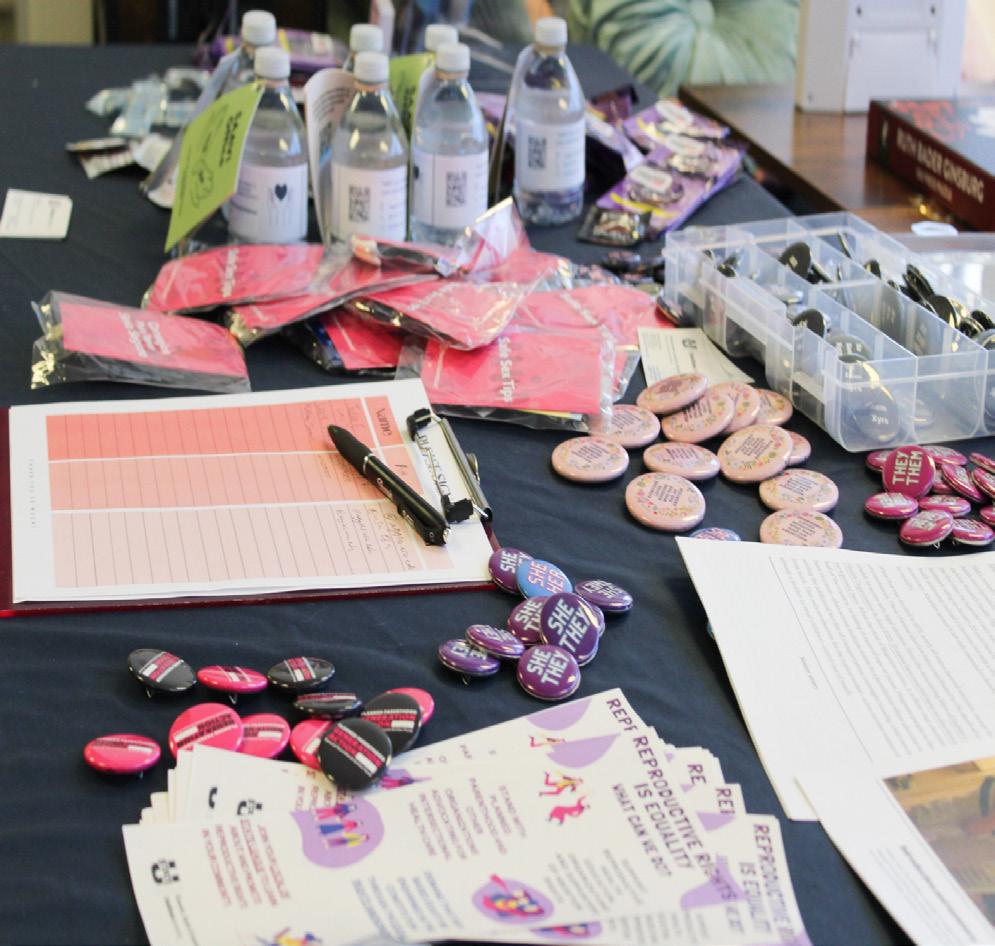
Anna Cliff, the women and gender equity intern, said the day is about raising awareness for all types of contraception.
“We all think that it is very important to be educated on the different types of contraception you can use as a woman,” Cliff said. “We also think it is a great day to educate others on reproductive justice for everyone, and this includes a lot more people than you’d think.”
The center used the day as an opportunity to educate others by handing out articles with empowering messages.
Throughout the event, the center welcomed many different people in, not only to educate themselves but also to be in a safe place.
“My favorite part about this place is how safe it is,” Cliff said. “It doesn’t matter who you are or when you come in, there will always be someone to try and help you with your needs.”
Business major Ally Davis said she enjoyed how thoughtfully curated everything at the event was.
“They have buttons for everyone, activities for everyone, and they always make sure that everyone is feeling included and safe,” Davis said.
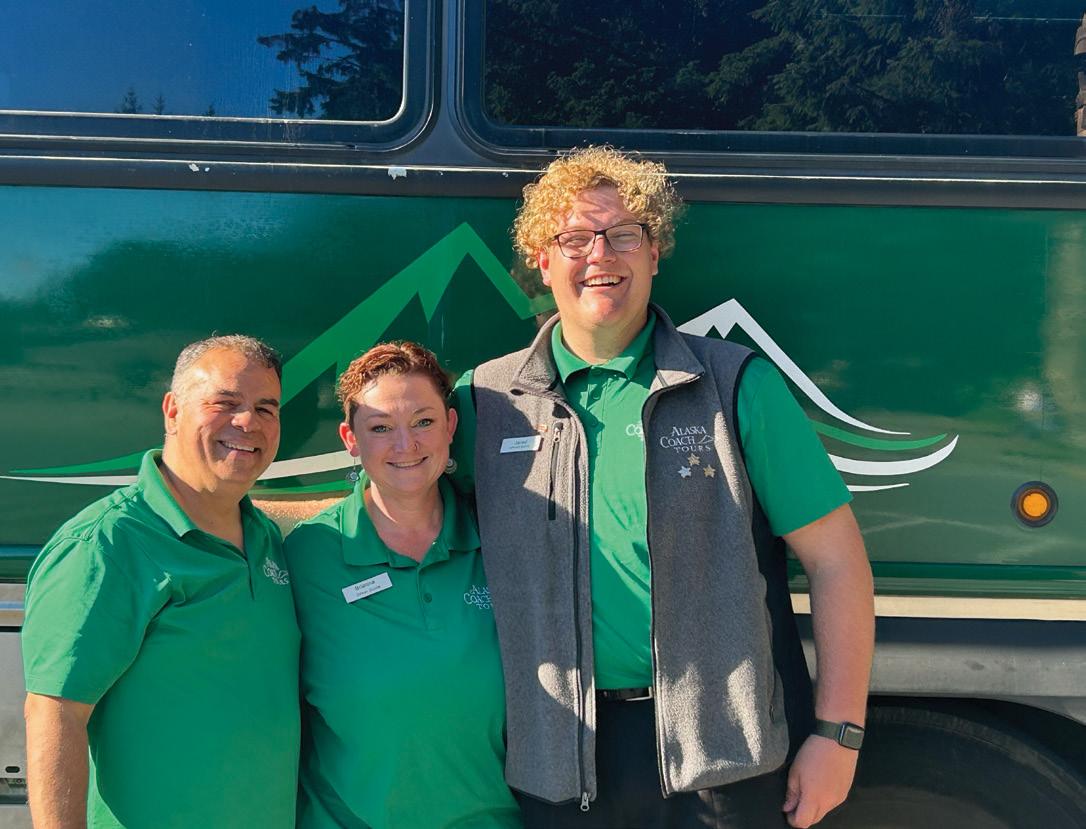
In the article, “Reproductive Justice for Disabled Women: Ending Systemic Discrimination,” Emily DiMatteo, Osub Ahmed and Vilissa Thompson discuss the misunderstandings, key issues and barriers disabled women face.
“There are several key issues essential to ensuring repro-
ductive equity and justice for disabled women: access to reproductive health care; forced sterilization; guardianship; sex education; parenthood; and sexual violence. People with disabilities face numerous barriers to accessing reproductive health care including accessible facilities and resources and accessible transportation,” the article said.
Kaylee Bullock, co-president of Students United for Reproductive Freedom, said she started advocating for World Contraception Day because of personal experiences that guided her.
“I started working here and advocating for this day because there have been moments in my life where I have felt like I didn’t have autonomy over my body,” Bullock said. “So, when I heard about this position where I could work for Planned Parenthood and this University, I jumped at the opportunity.”
Bullock recommended a healthy outlet for anger.
“When you have your rights and autonomy taken away from you, it just makes you angry, and one of the only ways to combat that anger is through advocacy,” Bullock said.
To read the rest of this story, visit usustatesman.com.
-a02420680@usu.edu
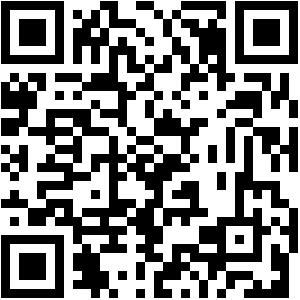

Students living near Utah State have many ways to get involved, one of which is the various volleyball courts littered around campus. The pickup games serve as an important outlet for many, as they are both a well-deserved break from schoolwork and a way to get some exercise.
Nearly every night at the volleyball courts behind the ARC, players gather for some friendly competition. Unlike USU’s clubs or intramural programs, these games are organized completely by students, making them open to anyone interested, of any skill level.
First-year student Orion Rand, an engineering major, immediately became engrossed in the local volleyball community when he arrived at USU. Now he plays almost every day.
“I saw them the first night I moved in, and I was trying to figure out where the volleyball group was so one night I was like, ‘I’ll just go and ask,’ and they let me in right away,” Rand said. “I asked some random guy, and he told me to go and join a group of six and hop on when it was my turn, so super accepting.”
For Rand, these events have helped him feel more comfortable at USU, making friends with Aggies from all walks of life. While he was initially worried that he would struggle engaging in campus life, volleyball has given him more confidence.
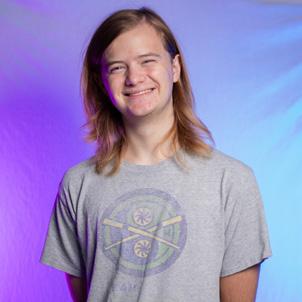
“It gave me something that I could look forward to every day. Even though I’m still getting used to things, I can go out and play volleyball every night and make some friends right off the bat,” Rand said.
Rand’s newfound friendships help him feel more at home at Utah State.
“It’s been really nice and beneficial. I’m pretty introverted, and I don’t usually get out there that much. Playing volleyball has really helped me get to meet a lot of people because I don’t talk to a bunch of people in classes,” Rand.
Another student, Kenyan Hayden, has had similar experiences with on-campus volleyball. He emphasized how important it’s been to him,
“There’s a lot of people that show up pretty consistently, so I’ve been able to make friends often,” Hayden said. “The people here are super cool; they’re all really nice and friendly. Especially socially, it’s helped me a lot. There are people here almost every night, so it’s a great place to hang out.”
For many, finding their place in a new area can be difficult. Casual volleyball helps to bring USU students together to create meaningful relationships.
Some take this interest in volleyball and even start competing at the club level. Student Bridger Toone began playing the sport recreationally, and his drive to play grew significantly.
“I definitely think I’d play club sports here. I don’t know
if I’m good enough to, but I’d be interested in taking the game to another level,” Toone said.
Of course, competition isn’t everything for Toone. Like the others, he expressed a love for the community that’s helped him connect with his fellow Aggies.
“Everyone here is so friendly, accepting. I wasn’t great at volleyball when I got here, but they’re all super kind and let me play with them,” Toone said. “It’s given me the extracurricular activity that lets me relieve some of my stress throughout the week.”
These opportunities are open to the entire campus. Anyone who has time in the evening can show up, join a team and play. This type of spontaneity is unique to the student-run nature of these games.
With over 20 people currently gathering nearly every night, volleyball at USU continues to grow. Whether you find your new passion on the sand courts or just have some fun with new friends, it has something to offer to everyone.
—jacob.hutchinson@usu.edu
After a successful first year in 2022, Utah State’s Unified Sports program is back with its flag football league. On Sept. 27, Special Olympics athletes gathered with USU students to kick off the season with assessments and drills before their first games.
Created in 2008, Unified Sports aims to give students with disabilities the opportunity to play on organized sports teams and connect with the community. Since its beginning, the institution has spread to over 8,000 schools across the United States and continues to grow.
Kayla Irlbeck, graduate assistant of competitive sports at Campus Recreation, has been working with Unified for some time now. After working as an intramural officer and sports supervisor, she decided to bring the program to Utah State.
“This is our second season running flag football with campus intramurals and Unified Sports,” Irlbeck said. “We partner Special Olympic athletes with students around campus, and we run a traditional flag football season with them and get a chance for everyone to collaborate.”
Unified Sports prides itself in giving opportunities to athletes who didn’t have the chance before. Their inclusive nature lets players from all walks of life show up and have fun.
“It’s been so life-changing for them. They’ve gotten to make so many different friends and it’s really made them feel like a part of the Utah State community,” Irlbeck
said.
Athlete Josh Fletcher has been able to make friends and stay active in a way which helps him feel comfortable.
“It’s where we come together and have a fun time,” Fletcher said. “We can make fun memories.”
After participating in Unified’s past seasons, he felt the program was a good fit for him. When asked about his favorite memory in the organization, Fletcher said, “Prob-
Jocelynn Hansen, competitive sports supervisor at Campus Rec, cares deeply about Unified and how it helps the campus become more inclusive.
“Sports in our culture have become so focused on winning, money and fame, even at the collegiate level. But to see students with a pure love for the sport playing, whether they’re partners or athletes. They’re there because they love the sport, and that’s something we have in common,” Hansen said.
Hansen emphasized just how important Unified is for these young athletes.
“In high school, all their classes were separate, and giving them an opportunity to have a sense of community and doing something together no matter our differences impact them greatly,” Hansen said.
“I know Josh from the basketball season last year, and we had such a huge turnout. The fact that he remembers me makes my world.”
Irlbeck stressed Unified’s effects not just for the athletes, but for the partners as well.
“We had students that started with us last fall and they’re back again to do it this year. Those who come out and participate have a great time; they love being part of it, and friendships go both ways. You see athletes hugging their partners every week. The relationships are really meaningful and impactful,” Irlbeck said.
ably getting a touchdown. It made me feel happy. I might do it this year!”
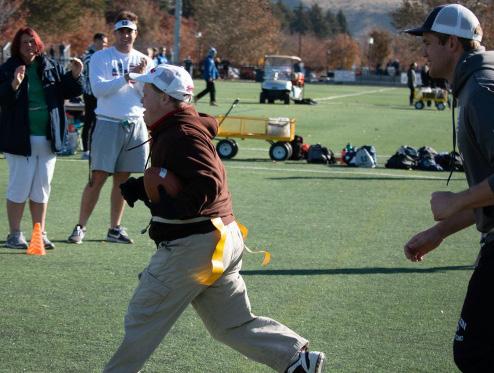
The leagues haven’t only benefited the athletes. USU students get to partner with athletes, creating new and long-lasting friendships.
Both students and athletes who are interested in participating can contact Irlbeck at kayla.irlbeck@usu.edu.
In bull riding and other events in rodeo, each rider has to stay on for at least eight seconds to be able to score points for the event. In the words of USU rodeo club member Kylen Jones, “You have eight seconds to make money.”
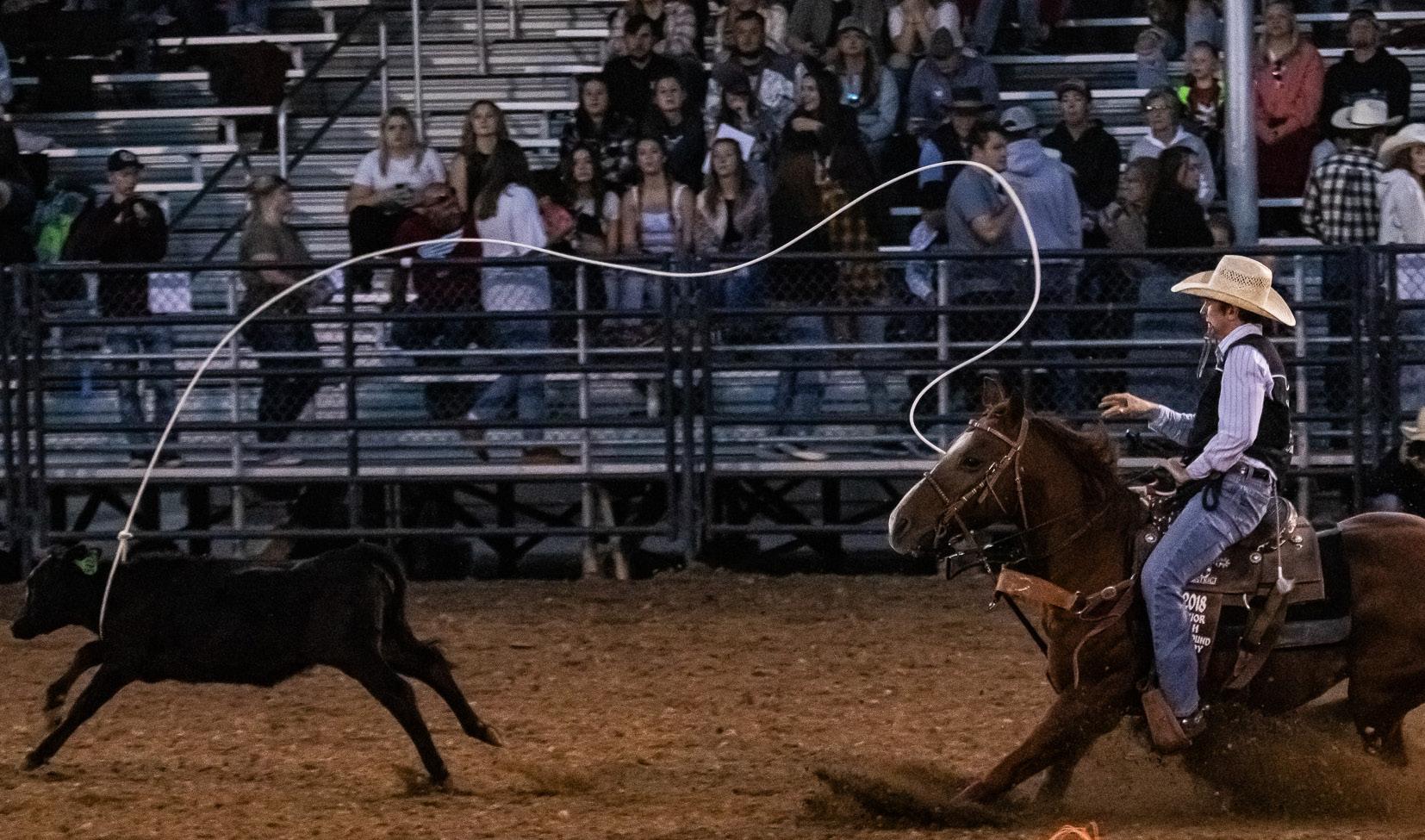
Of the 26 different club sports Utah State University has to offer, rodeo could be one of the most unique.
The USU rodeo team hosted its annual stampede event on Sept. 29 and 30, which included events such as bareback riding, barrel racing, breakaway roping, bull riding, tie-down roping, goat tying, saddle bronc riding, steer wrestling and team roping.
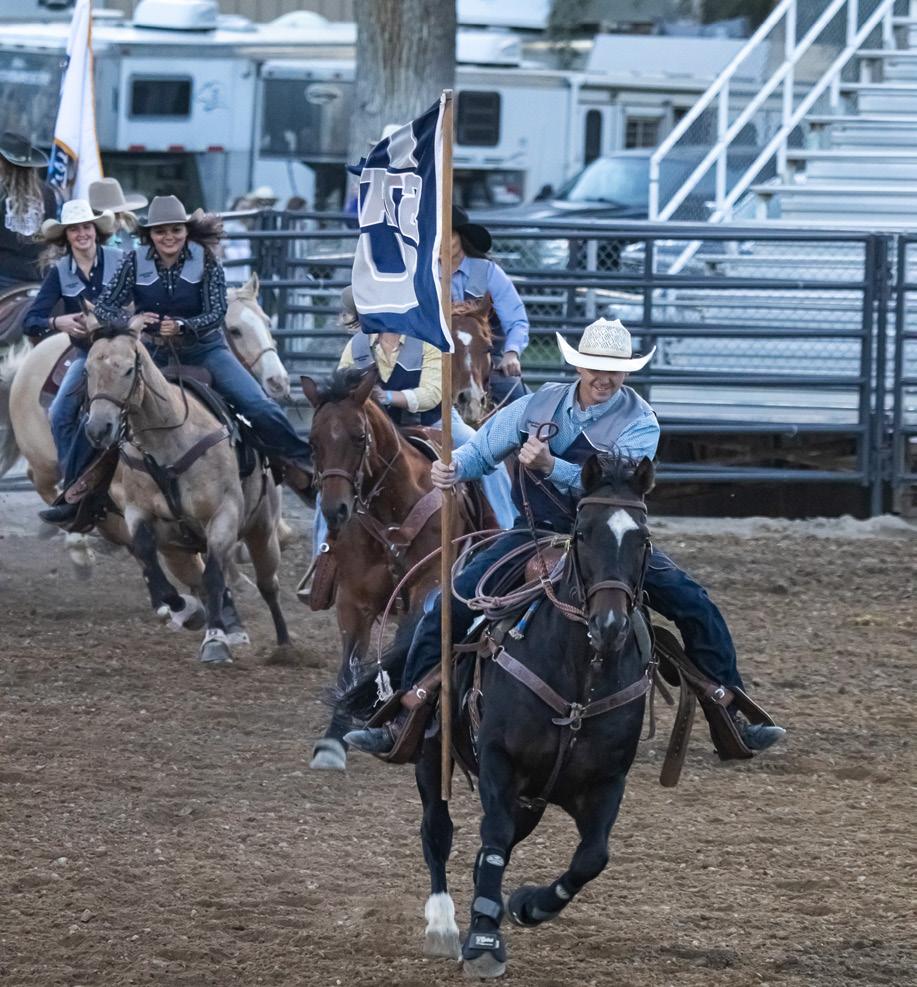
Paden Woolstenhulme is a senior from Oakley, Utah the current club president. He is majoring in animal and dairy vet science.
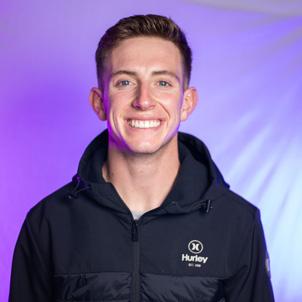
“My favorite part about rodeo is probably got to be working with the animals and the friends you make,” Woolstenhulme said. “It’s not your typical competition that you’d see in football where you show up and one person’s rooting against another team, you know. Here we’re all rooting for each other to do their best.”
The club has approximately 20 members who compete in a variety of events at rodeo competitions, and other members who are learning and practicing with the team.
The USU Stampede is one of many rodeo competitions the team will be taking part in during the school year. Woolstenhulme explained how the rodeo system works.
“We compete in what’s called the NIRA, the National Intercollegiate Rodeo Association, and it is nationwide,” he said. “We are part of what’s called the Rocky Mountain region, which is schools in Utah, Western Colorado and Southern Idaho. There are probably like 10 or 12 schools that compete in our region. We go to 10 rodeos a year, and we are lucky enough to be able to host our own here in Logan. Each of those rodeos, we compete to get points to be able to qualify to go to nationals next summer.”
Nationals are held every June in Casper, Wyoming where teams from Texas, Colorado and others from across the nation come to compete.
For Woolstenhulme, rodeo has been a major part of his life; it’s a family ordeal. The same can be said for club member Payt Goodey.
“I was probably not even old enough to talk the first time I sat [on a horse],” Goodey said. Goodey is a native of Cache Valley, growing up in nearby Clarkston. He is a sophomore at USU studying animal and dairy science, and he has been on the team for two years. Goodey is following a family tradition of being a part of the rodeo roping team.
“My older brother rodeoed for Utah State, and sometimes I would bring the cattle to the practice and I got to be around a little bit before I was a student. I just kind of saw the camaraderie in the community that the rodeo was, and I knew I wanted to be part of that,” Goodey said. “When I was old enough to start school, I started school here, and those people have come and gone but the new people that are in the club are just as good or better. And it’s a lot of fun just to rub shoulders with them.”
Just like many of the club sports on campus, students have to pay their own fees for registration, travel and other expenses. Like many of his fellow teammates, Goodey has a lot going on behind the scenes.
“You’re a full-time student in order to rodeo,” he said, “You have all your classes and homework and everything and then you got to practice for your rodeo. And then there’s no scholarships offered at Utah State for rodeo. Most of us have jobs and we work on top of that.”
That is only part of the commitment these athletes give to their sport. Both Woolstenhulme and Goodey talked about many things the athletes do behind the scenes those unfamiliar with rodeo would never know.
When asked what he would tell someone who doesn’t know much about rodeo, Woolstenhulme emphasized the importance of people educating themselves.
“I would say get to know the sport. There’s a lot of opinions out there, and a lot of people have their idea of what the sport is, but people don’t understand what kind of work we put into this sport,” he said. “We’re not your typical football team, basketball team or whatever team has practice every day at four o’clock. We have practice twice a week, three times a week if we can find a place to practice.”
Rodeo members not only care for themselves as athletes but for their animals as well.
“We have animals that we’re taking care of that need to be in shape, need to be able to compete to the best of their abilities as well as take care of ourselves. There’s a whole other aspect to the sport than just us,” Woolsten-
hulme said.
Anyone interested can get involved in the rodeo team. First-year student Kylen Jones from Gilbert, Arizona recently joined this year. Jones had a different path in joining the team.
“I always wanted to be in the rodeo, but I lived in the city of Phoenix with 5 million people, so I never had the opportunity to know horses until about the end of high school. The last year of high school, my family moved and we bought horses,” Jones said. “From there I’ve fallen in love with it.”
Jones is currently a member of the team but is not yet competing in rodeo competitions. Right now, he is enjoying learning from each of the different members and being a part of the team.
“Ninety-five percent of life is just showing up,” he said. “And just fall in love with it. I think as they mentioned, like not many people know much about rodeo, but it’s the coolest sport.”
For more information on how to join the USU rodeo team, visit their homepage on the Campus Rec website usu.edu/campusrec/competitive-sports/club-sports/ rodeo.
Rylan Bean is a sophomore studying business management. He loves to be a part of the HURD, play sports, hike, bike and spend time with friends and family.
—rylan.bean@usu.edu
Tuesday’s rainstorm didn’t stop the annual Homecoming Week Powderpuff tournament, full of wins, losses and a championship under the lights.
Powderpuff, a women’s flag football tournament, was hosted by the HURD. Twelve teams started out playing on the Legacy fields Tuesday morning, and the final four played in the finals at Maverik Stadium later that night.
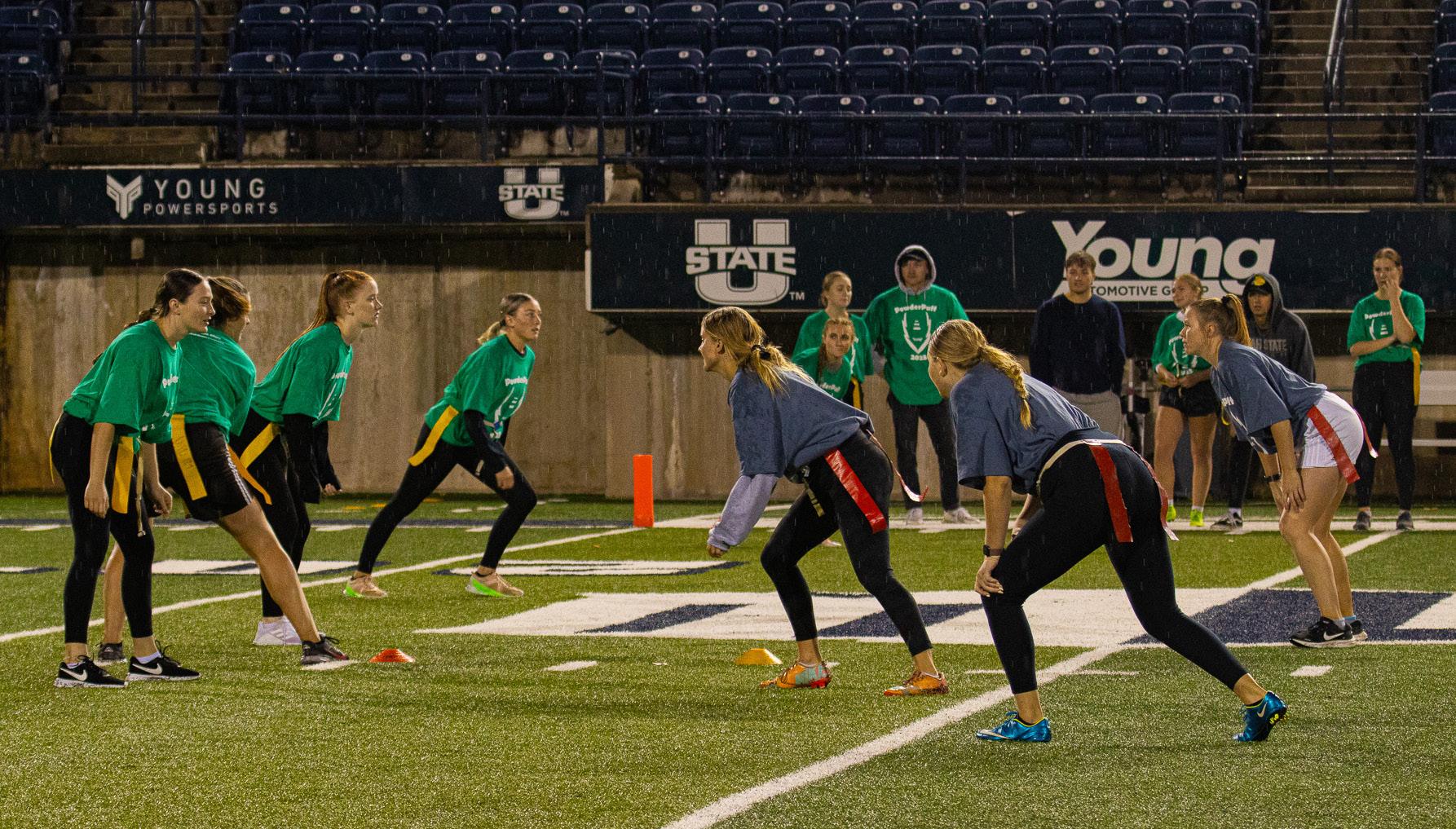
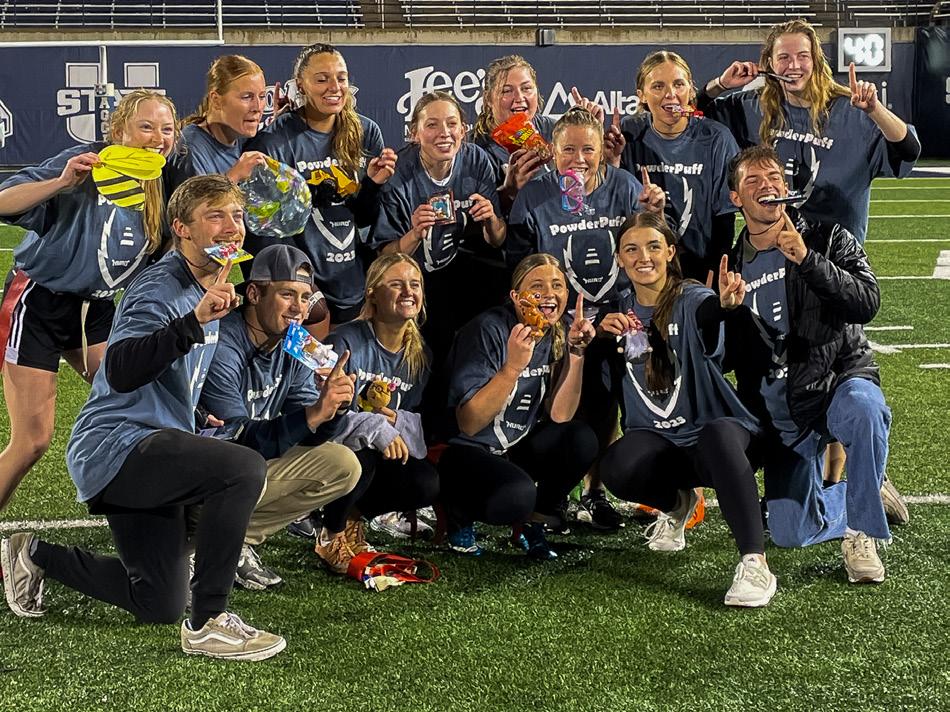
Jessica Ulrich, a program coordinator for USUSA, worked with the HURD to try to make this year’s tournament better than it’s ever been. After contemplating rescheduling due to the rain, they decided their main focus was to help the teams enjoy the tournament rather than have a bigger crowd of fans.
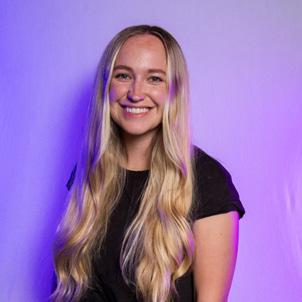
“Powderpuff is a tradition that we want to continue to keep going. It is an opportunity for girls to be able to play flag football, create teamwork and an opportunity for them to encourage other teams and also have that competitive style with it,” she said.
Athletics & campus recreation executive director Tate Bennett said they changed the tournament this year to create a better experience for players.
“Instead of doing a double elimination bracket like we did last year, we did pool play to get more accurate seeding for the teams and then just a single elimination tournament,” he said. “It took a little bit longer, and a lot more organization went into it, but it’s been a lot of fun. A lot of the players have liked it better.”
Some teams signed up together, and other individuals joined already-established teams. Several teams met each other for the first time on the day of the tournament. Each team is promised four games — three round-robin pool games and at least one single elimination.
In years past, only the championship has been held in Maverik Stadium. Bennett’s goal was for more teams to have an opportunity to play under the lights by adding the semi-finals there as well.
“It’s an opportunity for women to be involved in the sport that’s not played by very many women at all. It’s a great opportunity for them to get out on the field to compete,” Bennett said. “You know, it’s just fun at the end of the day.”
Chloe Skinfill came to the championship as a spectator.
She wasn’t able to join a league this year but was hopeful to participate in the future.
“I love football,” she said. “I’m in a flag football class. I play on an intramural team, and I loved Powderpuff in high school. I know how hard it is to do, especially if people don’t come and watch, so I decided to come and dragged my friend along with me.”
Skinfill always wanted to play football growing up, but there were few options for girls. She is grateful events like this are put on, providing opportunities for everyone to play.
“It shows that they actually care. They have things for us to do. There are people who want to see us play because we love to play. Even if we are women, we can still play sports,” Skinfill said.
Savannah Whiner, a member of the team Wasted Potential, lost in the championship. Her team surrounded her as they reminisced on the full day they had. Most of the team met the day of the tournament and have since become close friends.
“I wanted to join because we are competitive, and I knew we could bring our talent to the field,” Whiner said. “The experience is great. All the girls on the field are amazing, and so it was just so fun to be around a good group of people.”
Tournament champions The Real Housewives of USU went undefeated and until the semi-finals, shut out each team, not allowing a point on the board. Quarterback Peyton Teevens was named MVP as the team celebrated in the rain. Teevens was a clear standout to spectators as she threw frequent spirals down the field into the endzone. She dedicated the win to her dad, who played college football, and her late uncle, who taught her how to throw.
“Honestly, my homies over there were like, ‘Peyton, you have to play,’ and I was like, ‘I’m taking us to the chip,’” Teevens said. “I have the best receivers in the dang college, so I appreciate all of them.”
Teevens said the tournament brings inclusivity to Utah State. She says they proved it’s a successful event by the crowd watching, even in the rain.
“I think we’re showing that women know what we’re doing in the sport, and it was cool to see everybody out here supporting,” she said.
The team celebrated their win by dancing under the lights and sharing homemade trophy necklaces.
“It feels freaking awesome, especially in the Mav under the lights,” Teevens said. “Don’t tell the football team this, but I think that might be one of our best wins this season here.”
—madison.weber@usu.edu
On Sept. 30, USU’s club hockey team went up against Idaho State in a barn burner of a game. At their first home game of the 2023 season, USU wowed the fans with assists, goals, teamwork and sportsmanship.

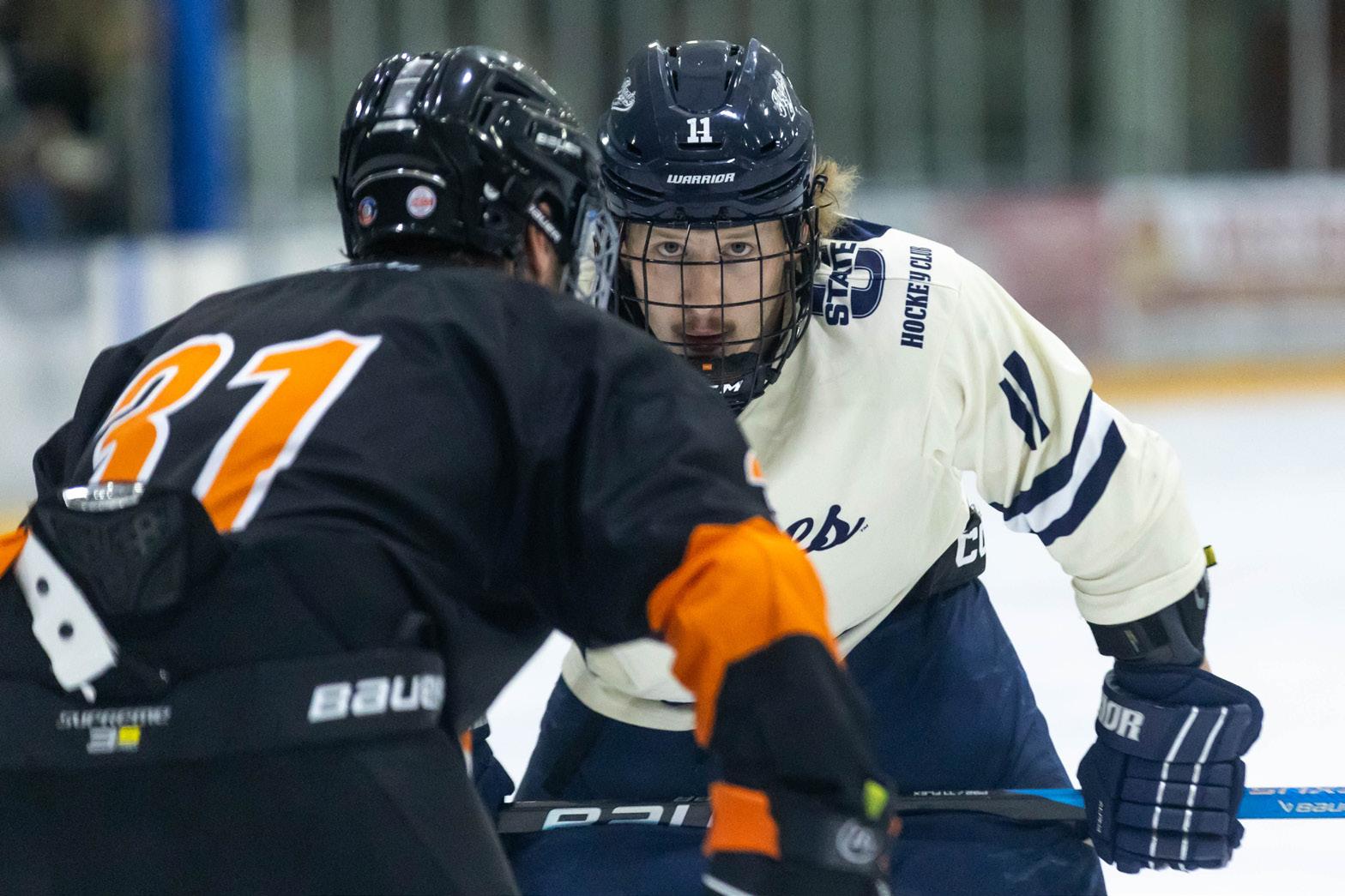
Senior forward Sean Johnston scored the first goal of the game with an assist from Ben Carlson, senior forward, and Caleb Sanborn, freshman forward. Within the first three minutes of the game, the team brought the score up to 3-0.
Most of the action in the first quarter was with Idaho’s goalie, with USU continuously taking the shots that raised the scoreboard. With 1:06 left in the first quarter, Alec Moser, senior forward, and Tate Jenson, freshman defenseman, assisted Dillon Hale, junior forward, to score the last goal of the first period, bringing the scoreboard up to 8-0.
Idaho came back from the first period by scoring the first goal of the second period. Johnston kept the team’s lead up with assists from Carlson and Sanborn, leaving the score at 9-1. With 10:03 left in the second period, senior forward Sam Voss raised the score to 11-1, both goals within two minutes of each other.
With USU in the lead on the scoreboard, people started to turn their heads toward other action on the ice.
Hockey is known for its physicality, and this game certainly gave the new crowd members a taste of what that looks like.
“I think this game was pretty physical. Once you’re up by a lot of other goals, it is typical for the team to focus more on hitting than scoring,” said senior defenseman Trace Farr.
“My favorite part about the hockey games are the fights — it adds intensity and makes things more exciting,” said local fan Todd Checkette.
With three different fights throughout the entire game, fans were able to get a glimpse of what’s to come in the future, especially at more intense games.
“Weber is a team that hits a ton, and that game is by far one of the best games we will play,” Farr said.
The second period ended with perseverance from Moser, who didn’t take much time to get up after an injury. His example of determination didn’t go unnoticed by the fans.
Ben Tschida, freshman forward, took no time to continue USU’s growing score. With only 43 seconds into
the third period and a stellar assist from Josh Girard, freshman defenseman, the score went up to 13-1. The team didn’t just continue to play with great skills and teamwork, but they also showed great sportsmanship.
“What I really liked to see from my team today was that they played the game. I’ve seen other teams play down to their opponents, but our boys continued to play hard and fast,” coach Rob Girard said.
“I think one of the most important things our team does is taking the time we have to stay locked in mentally so
we don’t fall behind when we are at an advantage,” said freshman goalie Kale Samuels.
With 20 seconds left in the last period, junior forward George Kuehn scored the last goal of the game with assists from Josh Girard and Mason Mulneaux, granting USU a win of 18-1.
After a significant win in their season opener, the Aggies are hopeful the team will make its way to nationals.
“Our number one goal as a team is to get an auto-bid to nationals and then do our best when we get there,” Farr said.
“We’ve been focusing a lot on locking down our power plays during practice and hopefully that will help us reach our team goals,” Samuels said.
“My mantra for coaching is, ‘play hard, play fast, play right,’ and that’s what we hope to do this season. We’re really working on finishing by scoring a higher goal ratio compared to the shots we make,” Rob Girard said.
Fans are expecting to see USU at nationals this year and are hopeful they will own the ice up there too. But there are still so many other things to look forward to before then. Each game comes with its favorite moments.
“A couple of the new guys scored their first goal for USU today,” Farr said.
Tate Jenson, freshman defenseman, and Josh Girard scored their first goal for USU, marking one of the top moments in today’s game.
Hockey hits the ice again on Oct. 5 against Montana State. But according to Coach Girard and most players, the most anticipated game of the season is against Weber State on Oct. 27, and fans should prepare to be entertained.
Cameron Carnes is majoring in journalism and English. She is most known for her love of Taylor Swift, Percy Jackson and the beach.
—a02420680@usu.edu
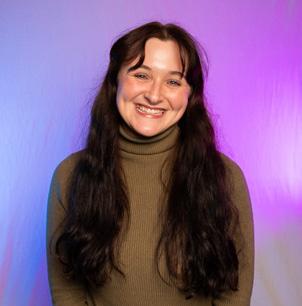
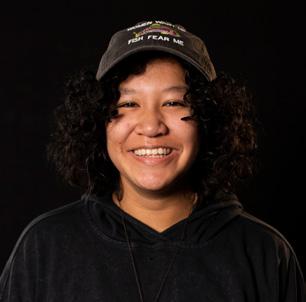

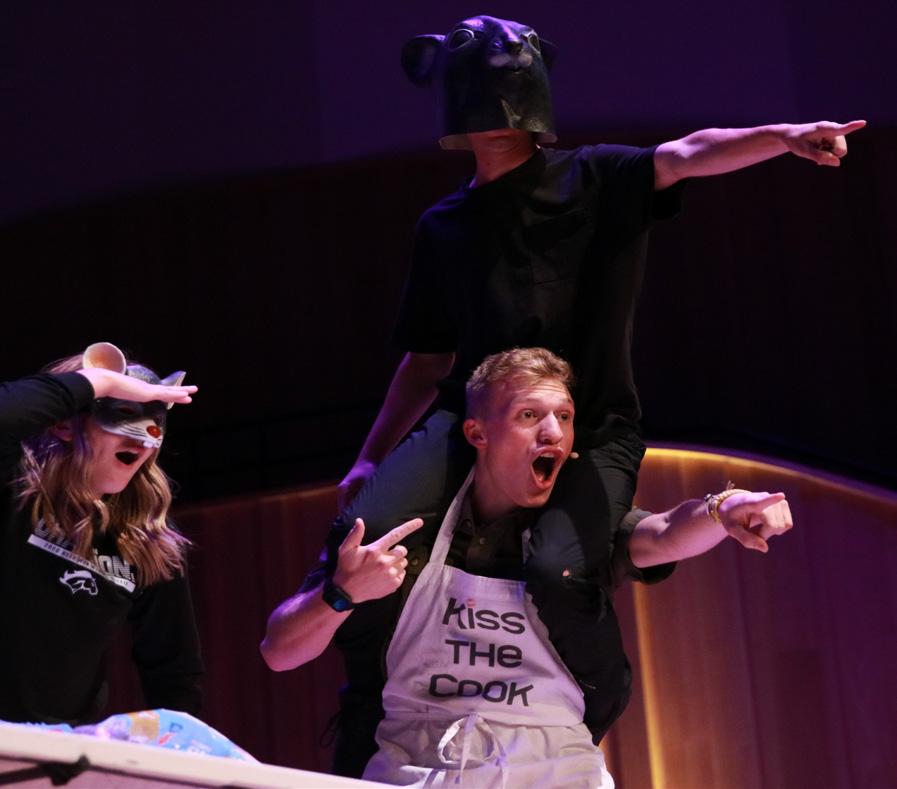
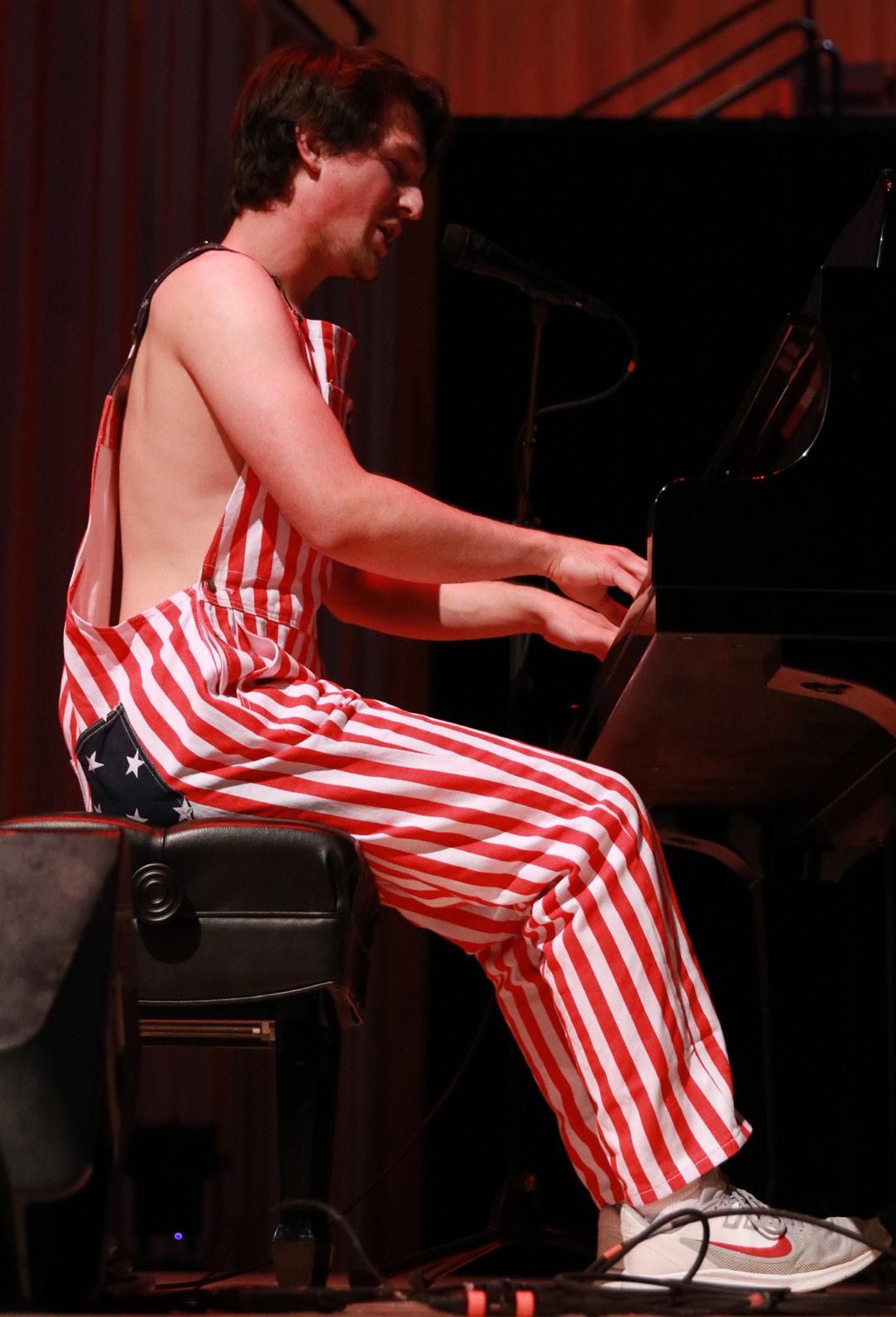
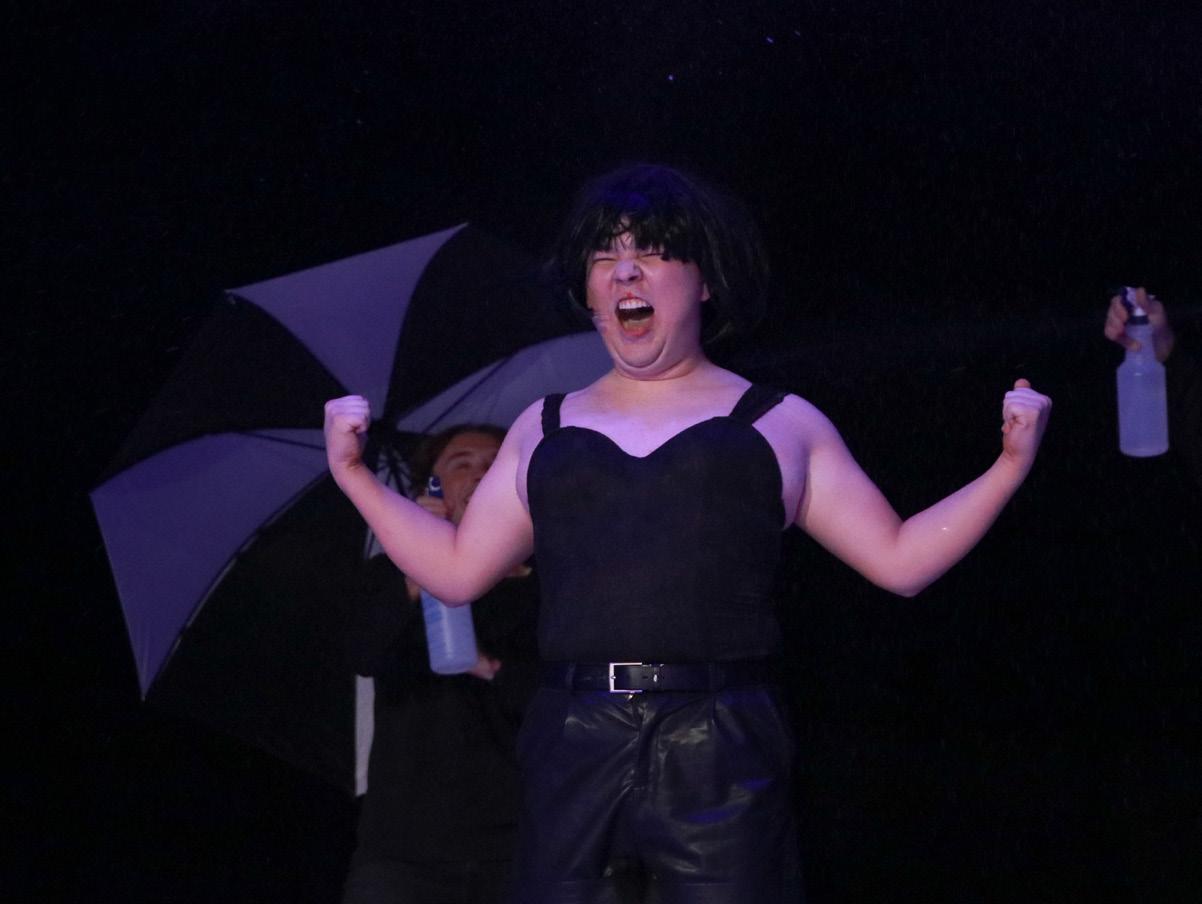
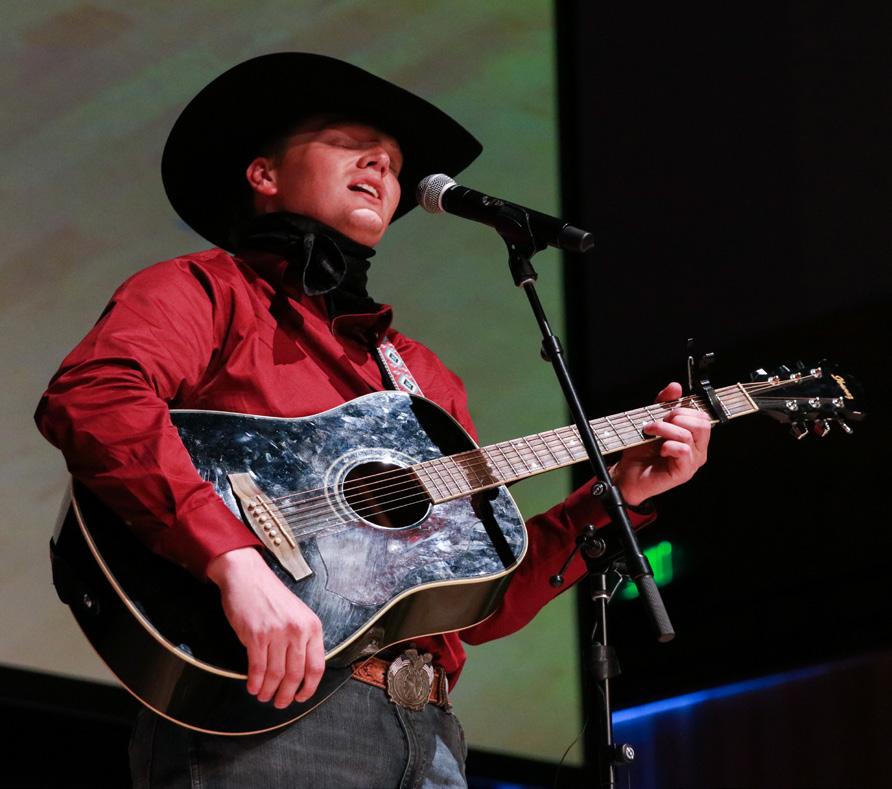

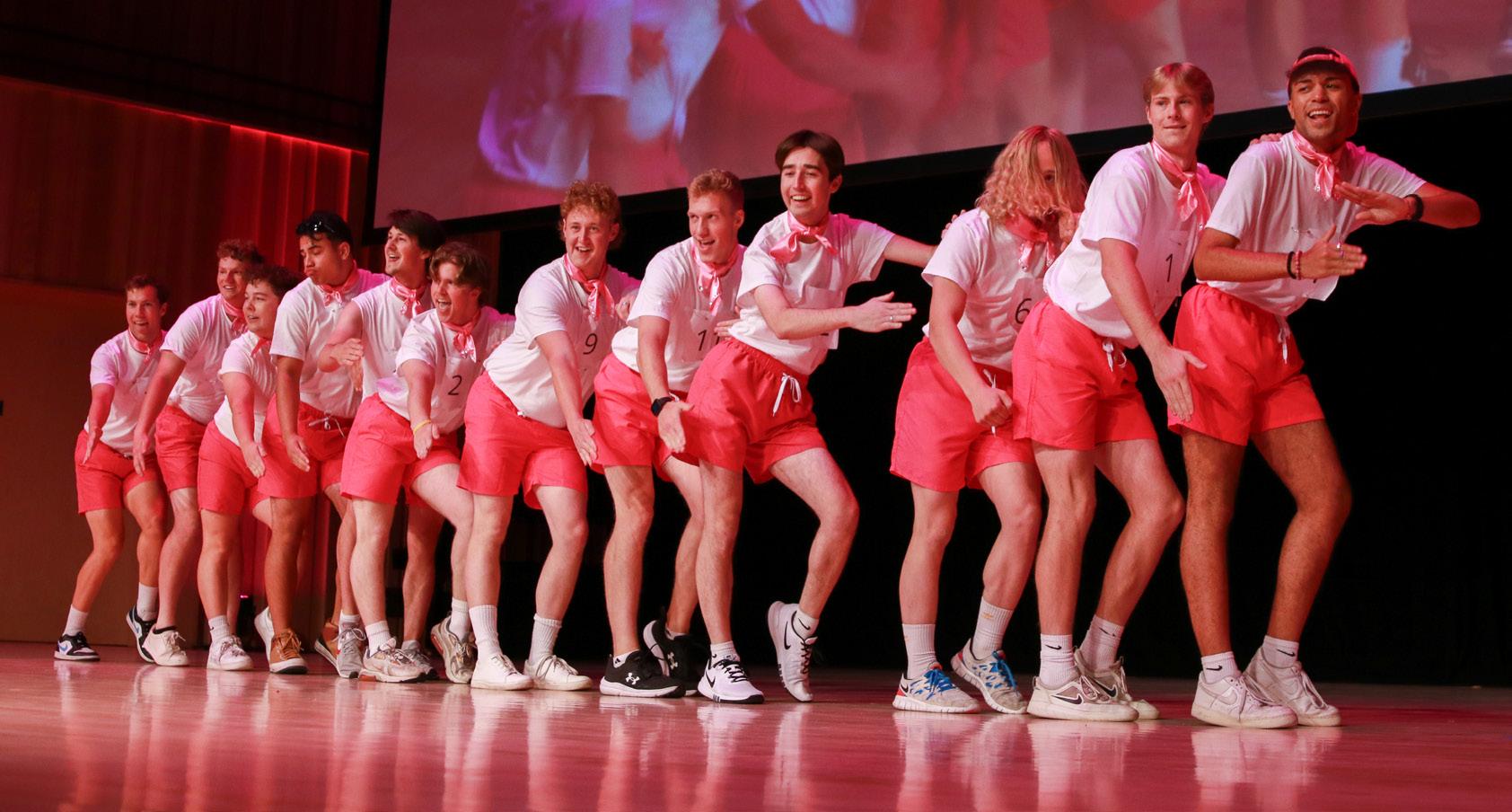
USU’s unofficial theme of the year seems to be construction. The housing department is hard at work revitalizing South Campus. A new LDS Institute building is under construction, and the Biology and Natural Resources building is getting renovations. New sites are popping up off-campus as well. But while most students are probably thinking about the Raising Cane’s on the corner of Cache Valley Boulevard and Main Street, other developments are also underway, with a far greater impact on our community.
Two new Walmart Fuel Centers are being built in Logan, one for each location in the valley. And naturally, with these will come more gasoline, more emissions and more dependency on fossil fuels, all things the city of Logan should be veering away from.


We have reached the point where climate change is no longer considered a hoax or a possibility. It is real, it is worsening and it is affecting us.
This has been known for decades, and instead of taking action to safeguard both the environment and the people, the city of Logan deems it appropriate to further the issue by approving these projects.
This has the potential to wreak havoc on our local environment. The southern Walmart is located directly next to part of Cache Valley’s wetlands, meaning runoff, erosion or a spill could contaminate the area, causing an untold amount of harm not only in Logan, but beyond the valley as well.
The wetlands end in Cutler Reservoir, and if gasoline
entered the water supply, it could poison the residents of Box Elder County.
The fuel centers will unavoidably have a long-term negative effect on Logan’s air quality, as the fuel will be burnt in cars, adding to the pollution in the air. With winter approaching, Logan and its surrounding communities will once again be subject to temperature inversions.
Under normal conditions, air cools as it rises, allowing it to disperse into the atmosphere. During an inversion, this blanket of warm air is pushed upwards by a cold front, trapping both natural and manmade particles closer to the ground as the warmer air above prevents them from rising.
Cache Valley is particularly susceptible to inversions because the slopes of the surrounding mountains lock in smog, preventing it from escaping. Vulnerable groups such as children, older adults and those with conditions like asthma can suffer acute respiratory issues. Even healthy adults can fall ill from pollution. As the lungs take in a lifetime’s worth of air, the amount of particulate matter they must filter accumulates over time, which can cause serious illness and even death.
Data from a 2021 report written by the World Health Organization estimated that air pollution was responsible for 7 million deaths worldwide in 2015. 7 million people dead in a single year.
How many of those deaths were preventable? And more importantly, how many can be prevented in the future?
Instead of prioritizing high-emission car infrastructure, I think the city could subsidize chargers for electric or
hybrid vehicles. Many models are within the range of affordability, and, according to the U.S. BLS and EIA, charging an EV is nearly three times cheaper than paying for gas.
We can also advocate for other forms of transportation, such as protected bike lanes or improved CVTD service. Both are cleaner than driving and have added benefits like improved health and lower fatality rates.
Even walking, which is the first, cleanest and longest-standing form of transportation, is often cast aside. Many roads simply lack any form of paved walkway along them, causing pedestrians to suffer an uncomfortable commute or risk walking in the street.
This is an issue even on campus, with the northern portions of 1200 East directly adjacent to both the Student Living Center and Aggie Village, being notably bare.
The addition of two new gas stations in Logan is unnecessary. Not only do we already have 18 to choose from, but it is far beyond time for both our municipal government and the corporations in our city to move beyond the era of gasoline, and on to something brighter.
Maybe then, we’d all breathe a little easier.
Asher Schroader is a first-year exploratory student at USU. With a focus area in humanities and arts, he is passionate about writing, art and graphic design, and making music. In his free time, Asher enjoys reading, playing Cities: Skylines, and spending the weekends with his boyfriend.
- a02415522@usu.edu
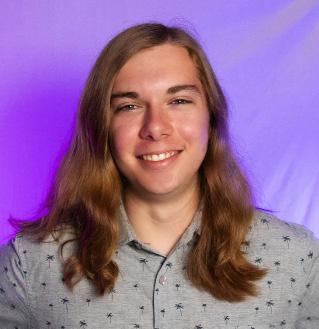
Sudoku puzzles are provided by www.sudokuoftheday.com.

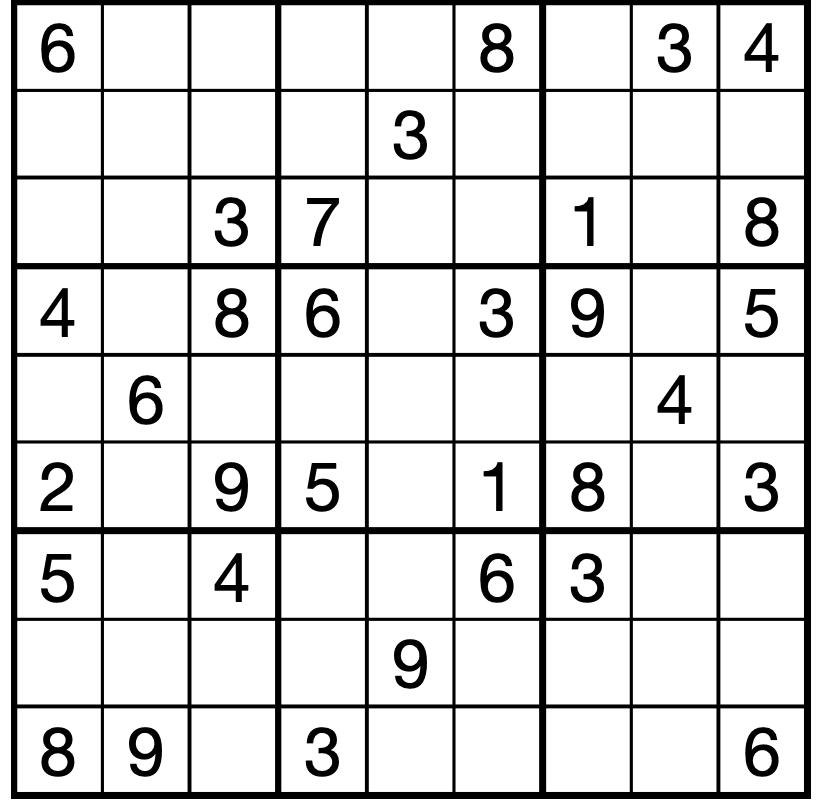

Last week’s solution:
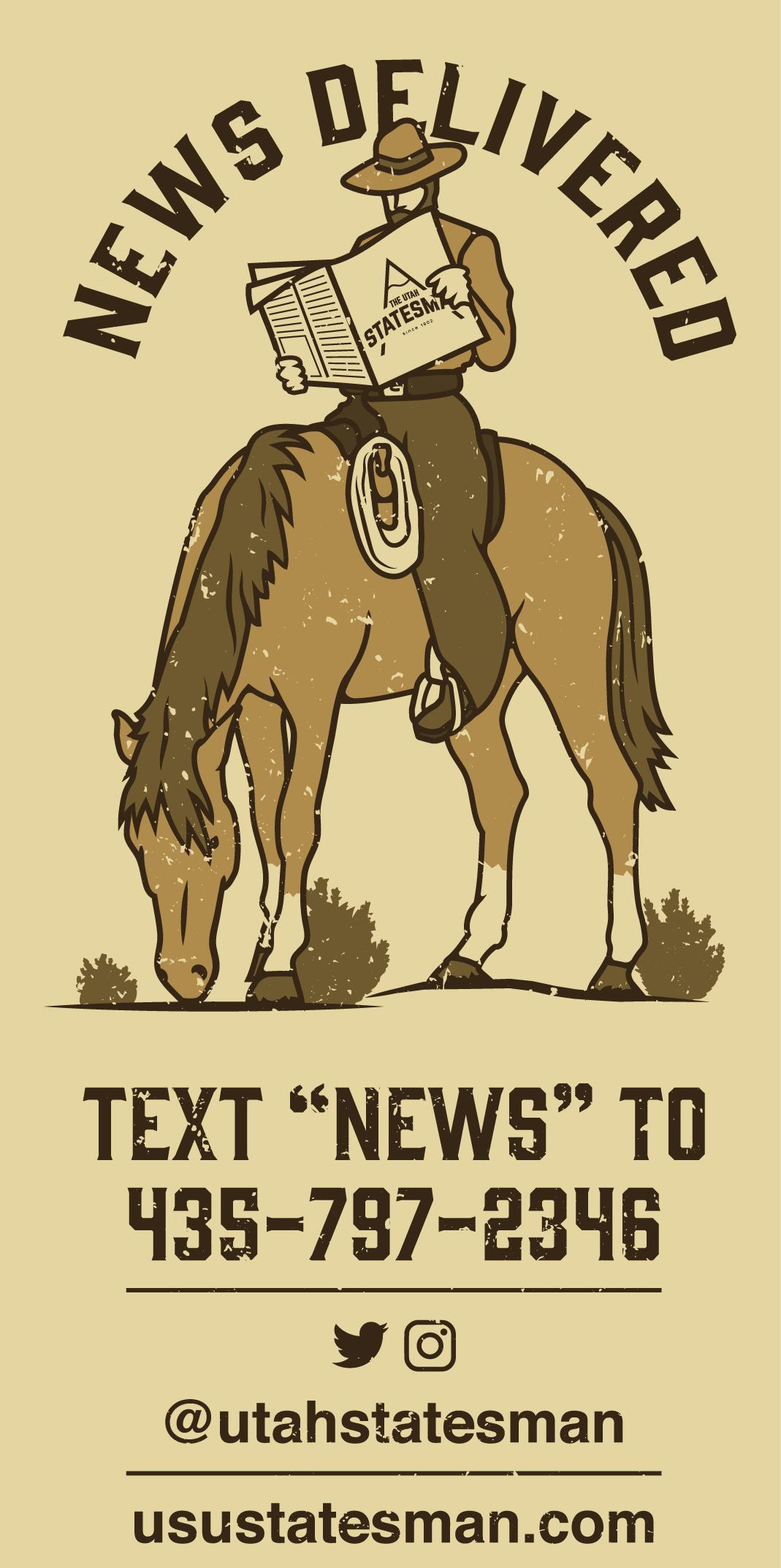

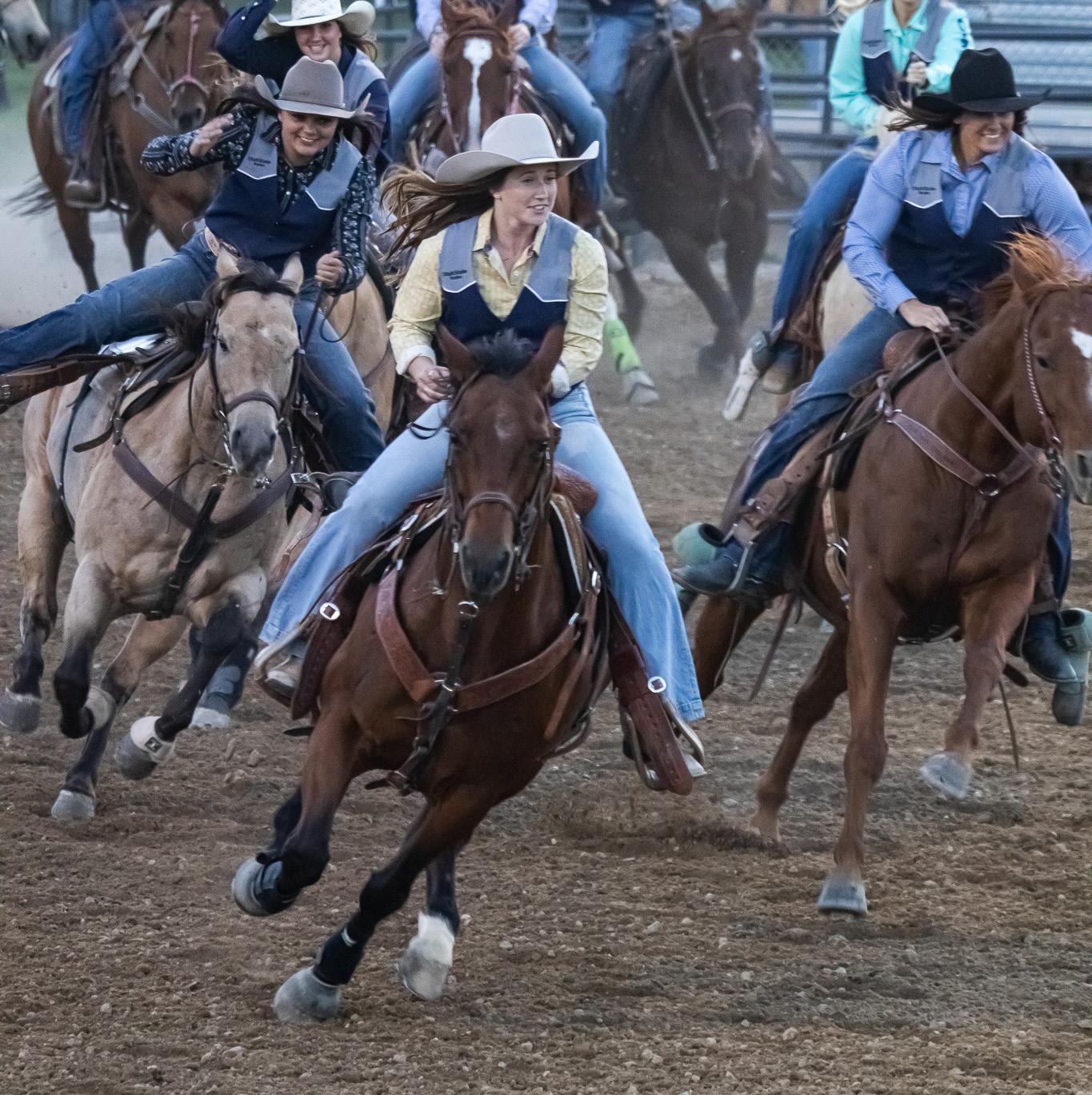 PHOTO BY Wyatt Merchant
PHOTO BY Wyatt Merchant